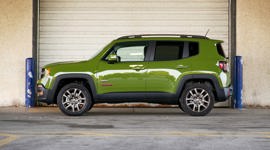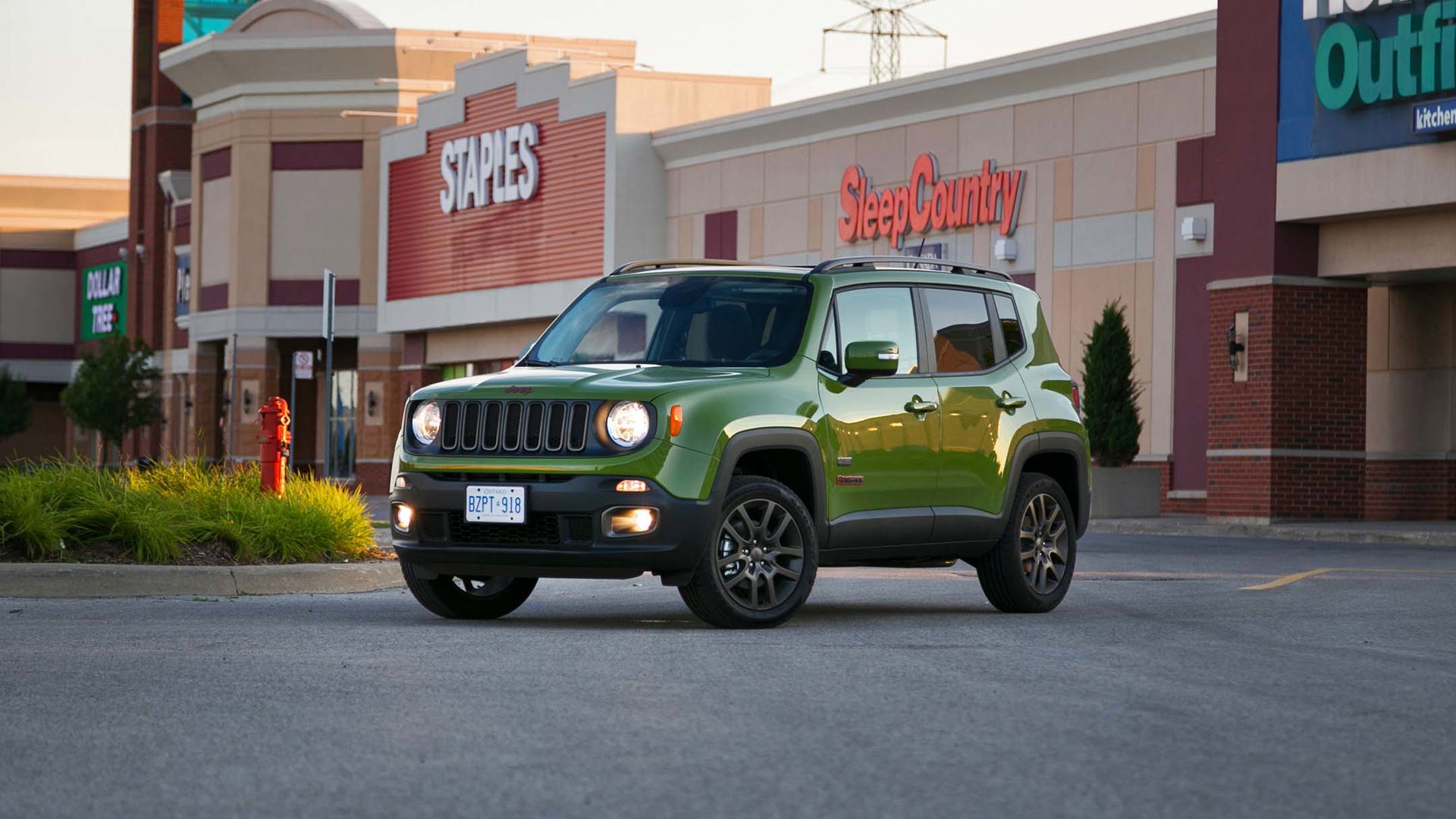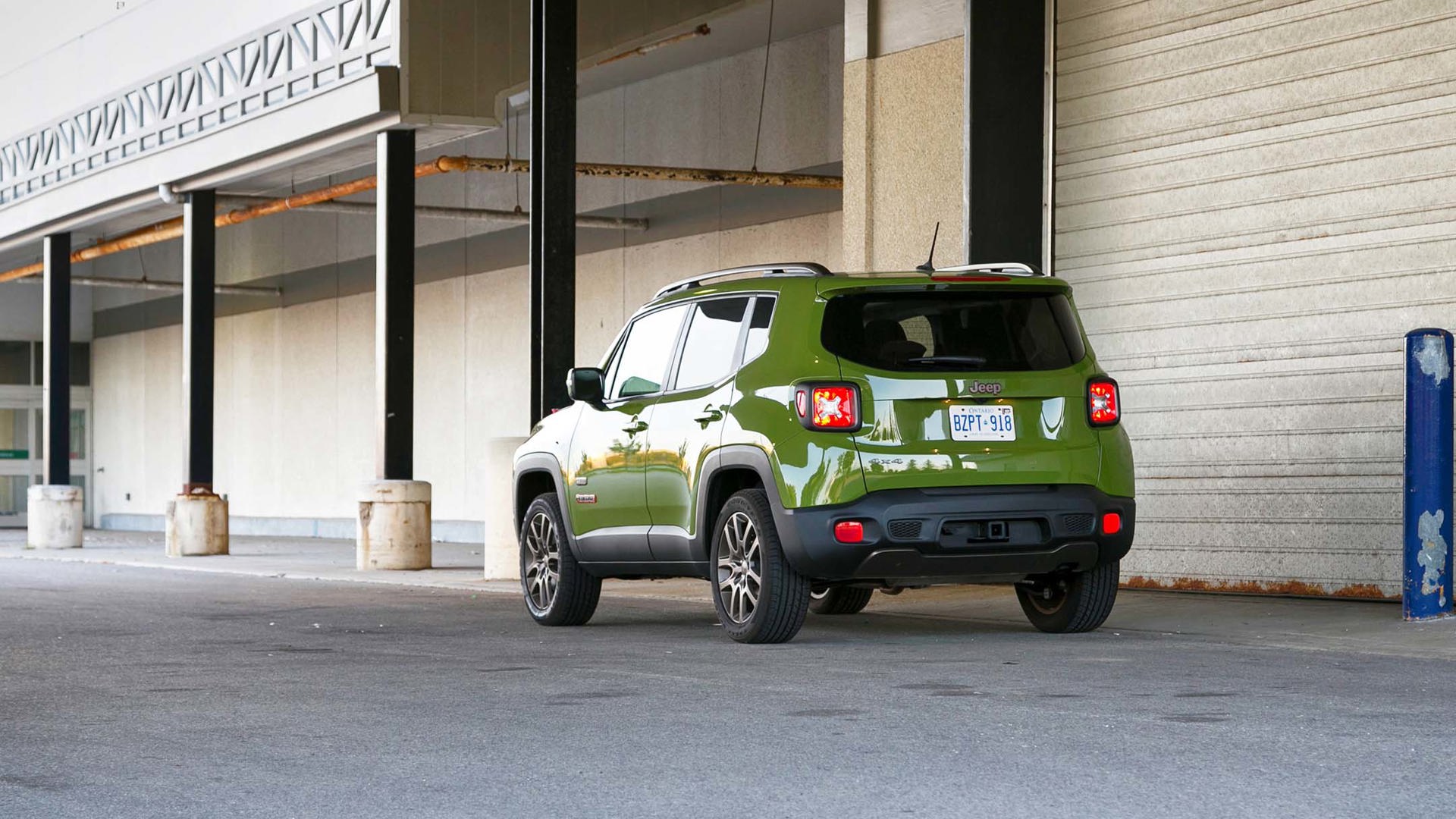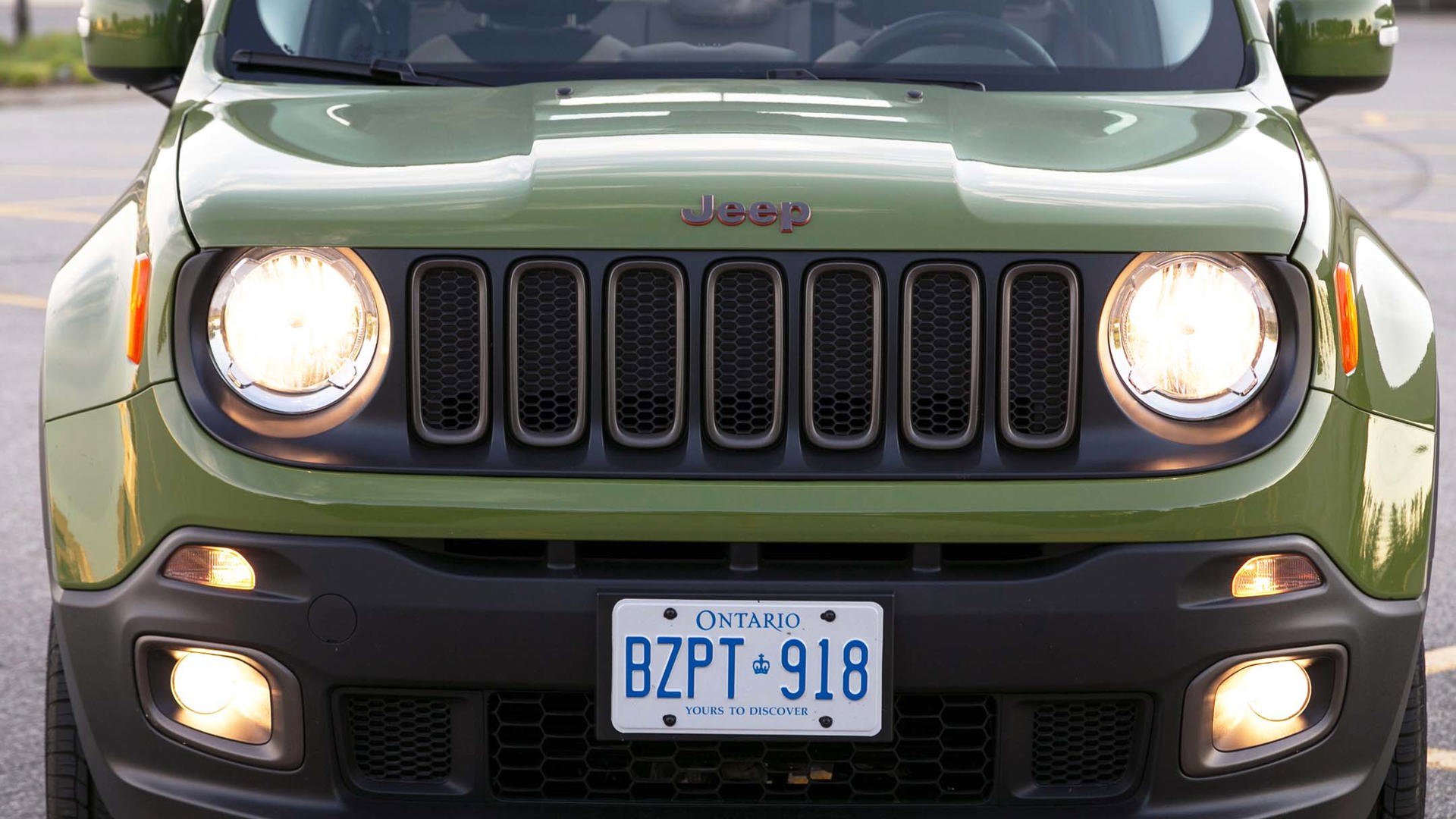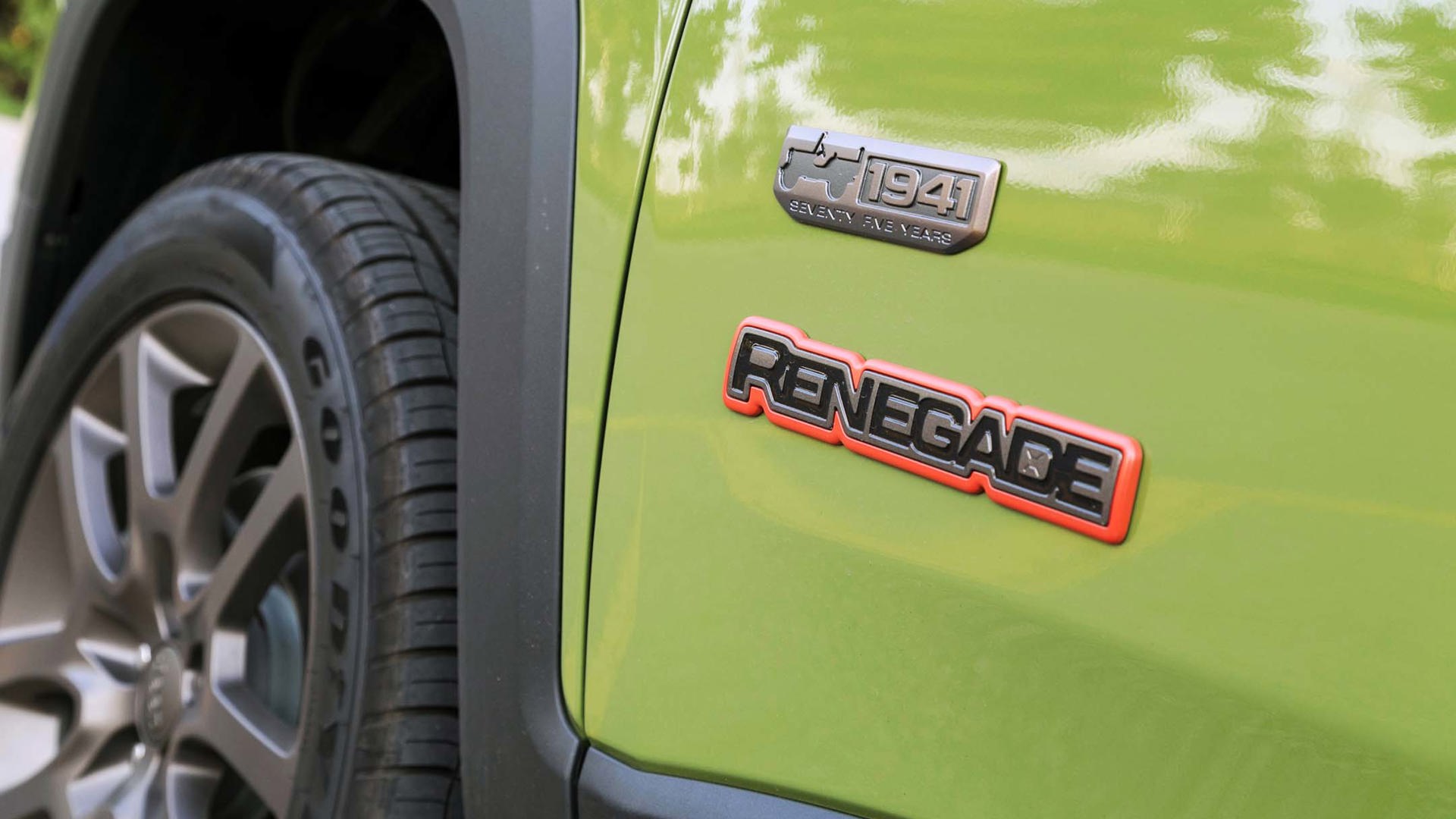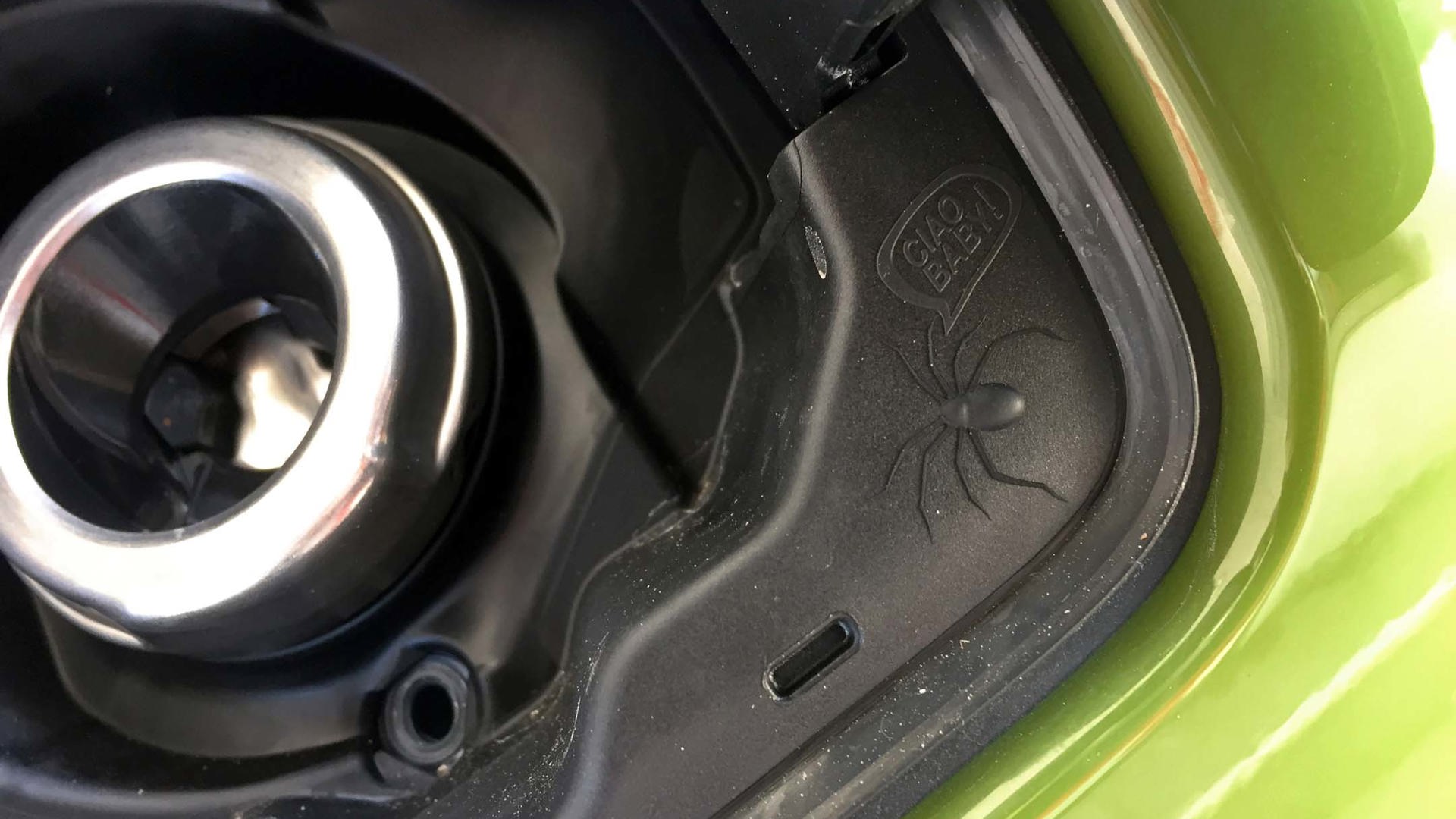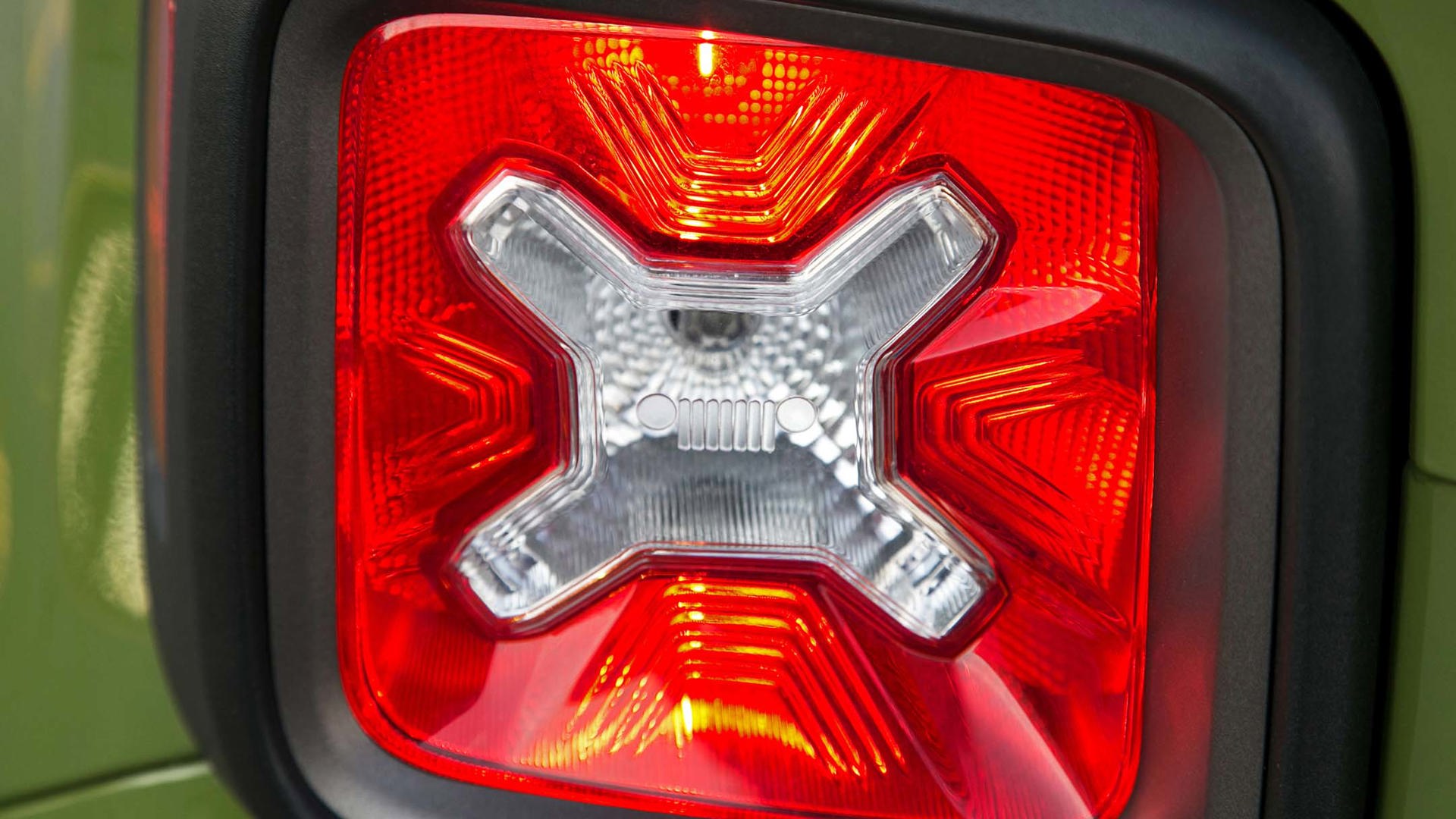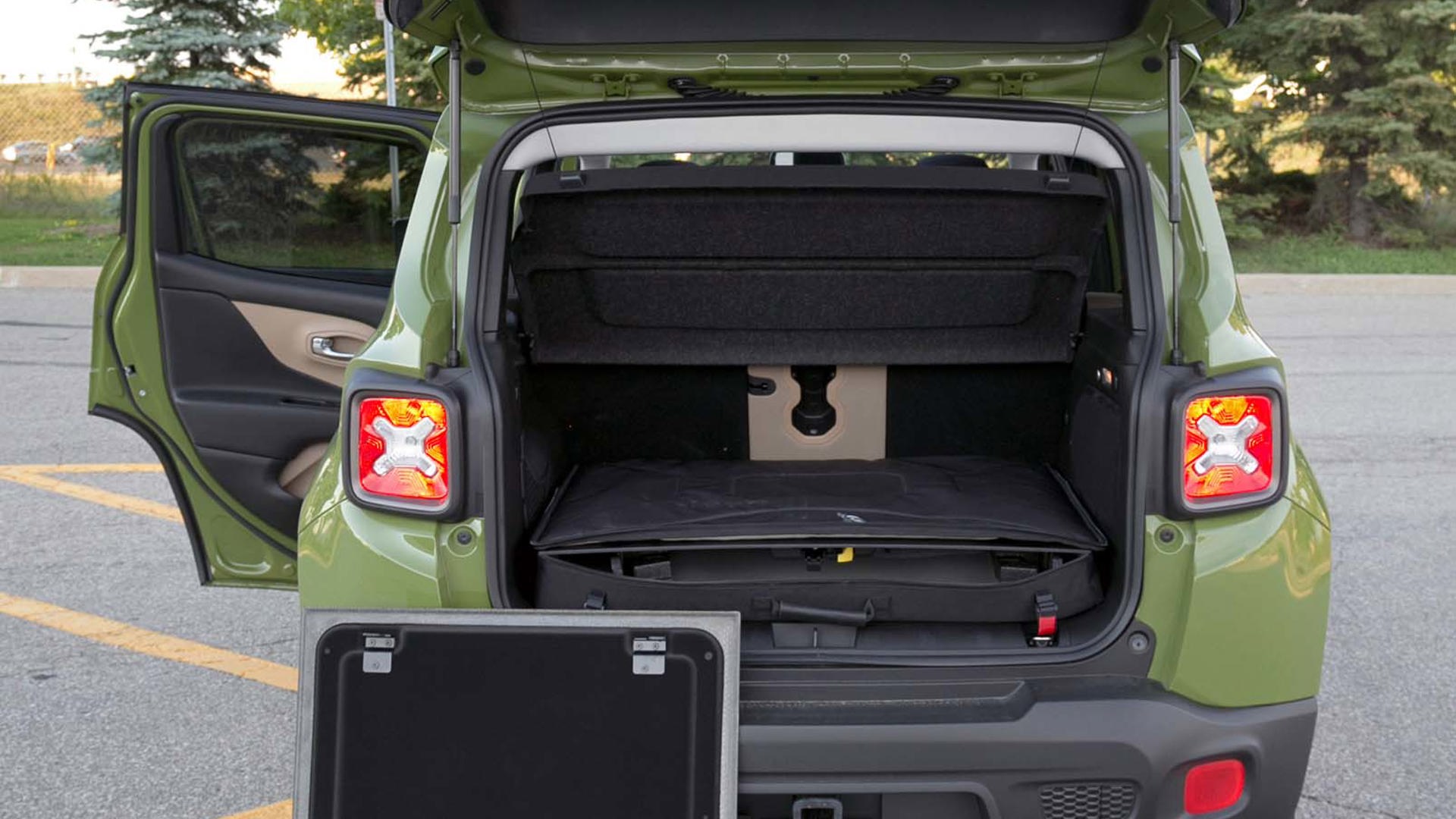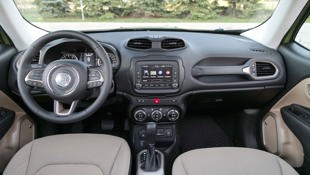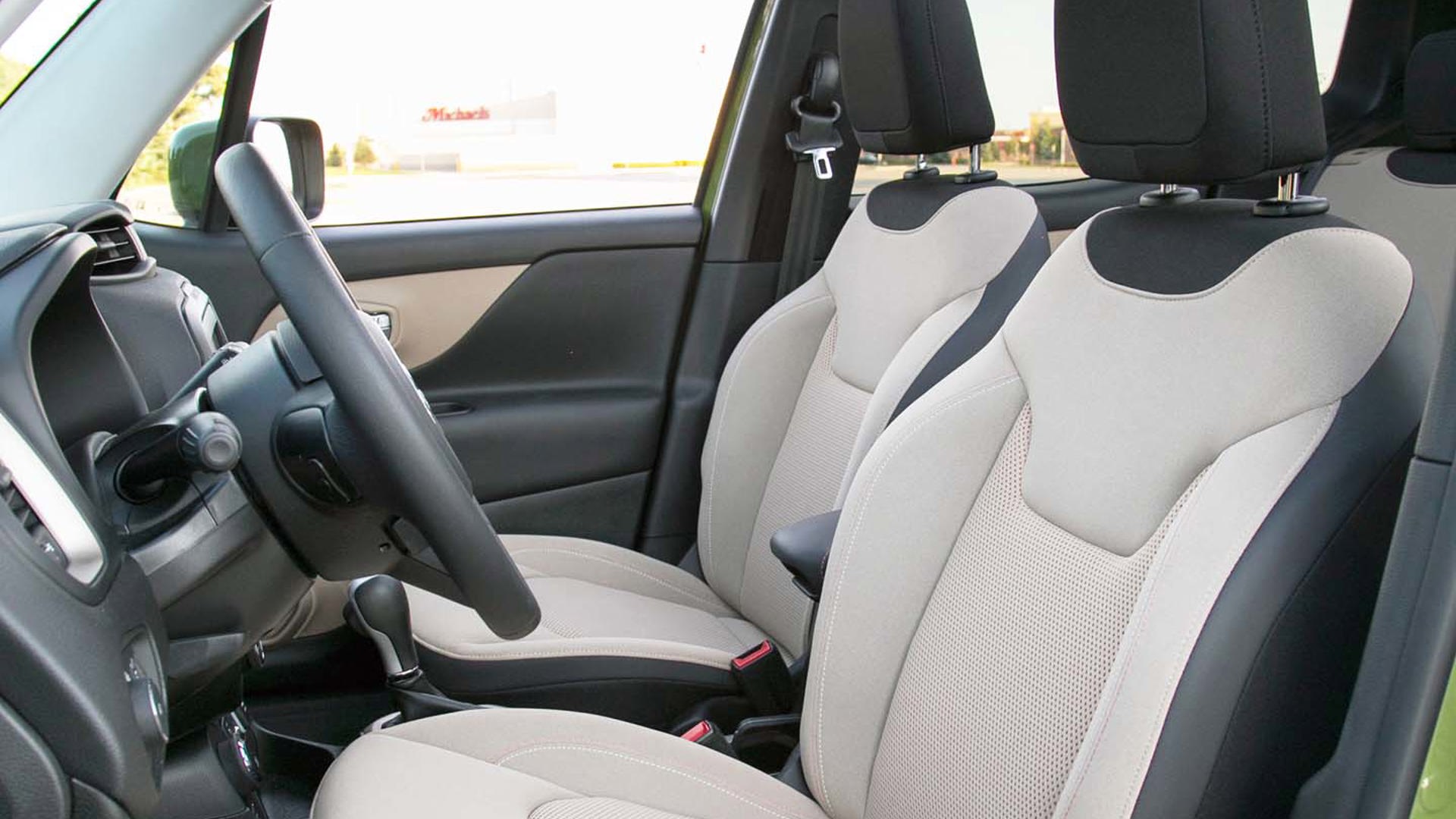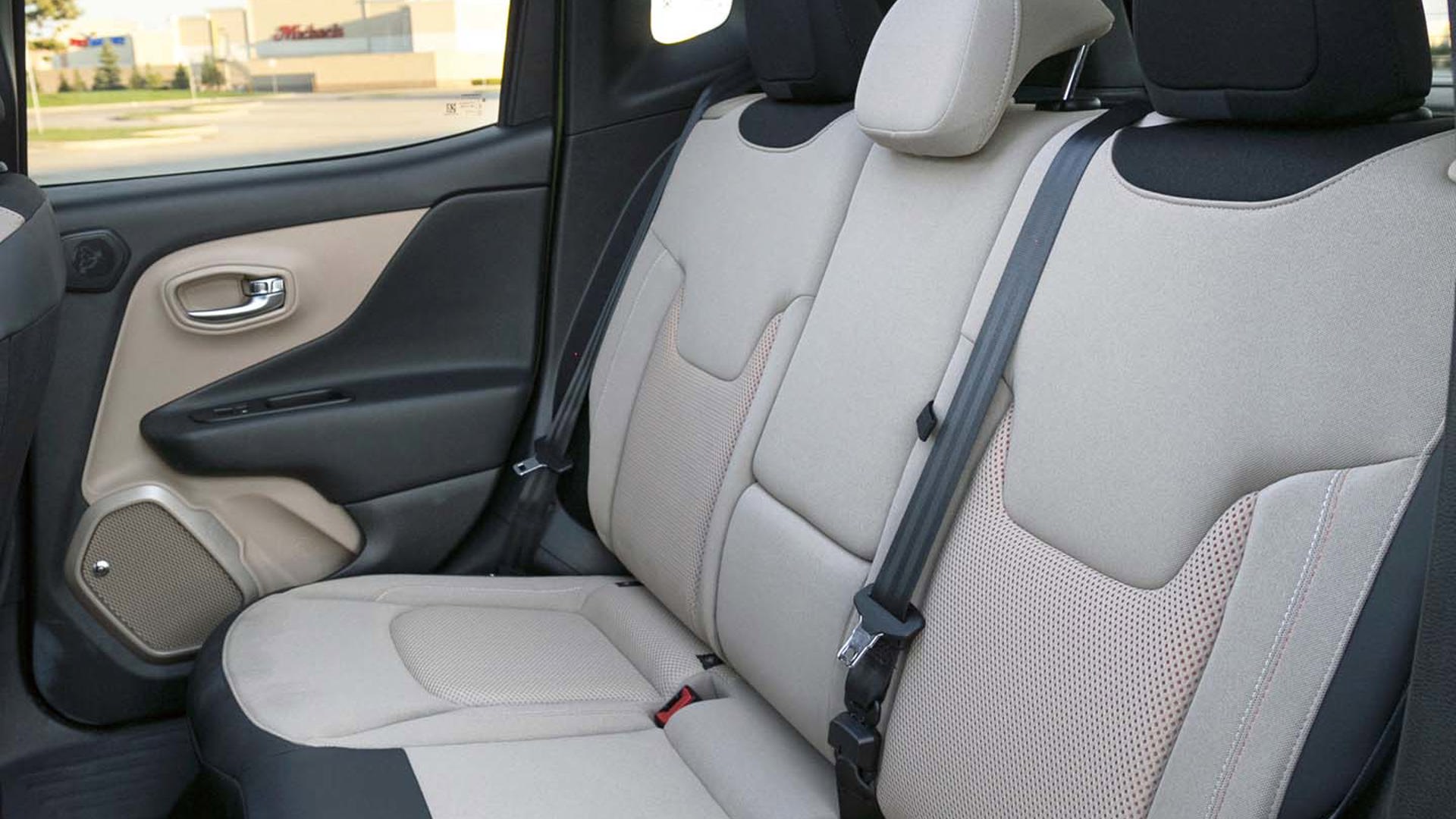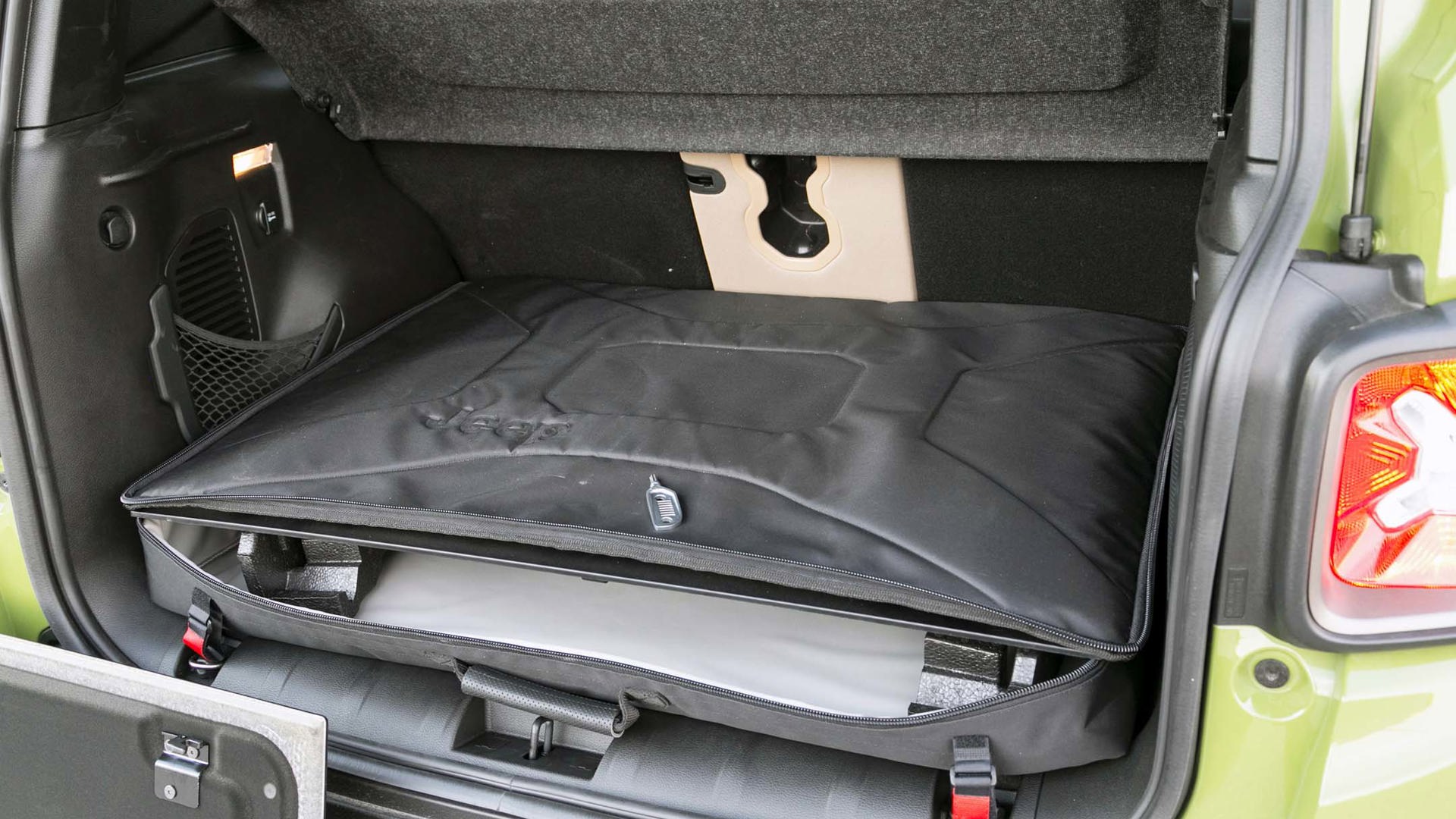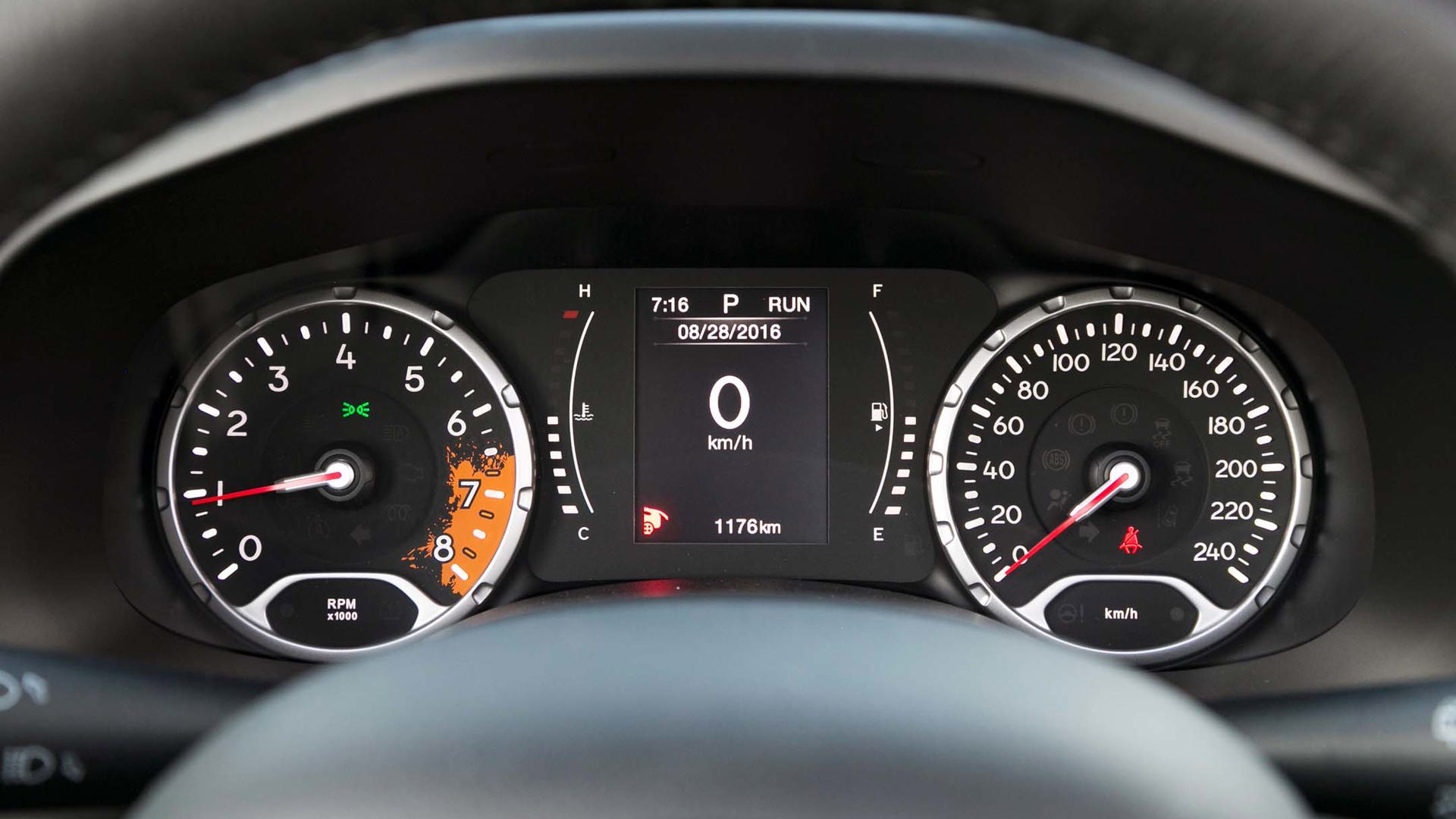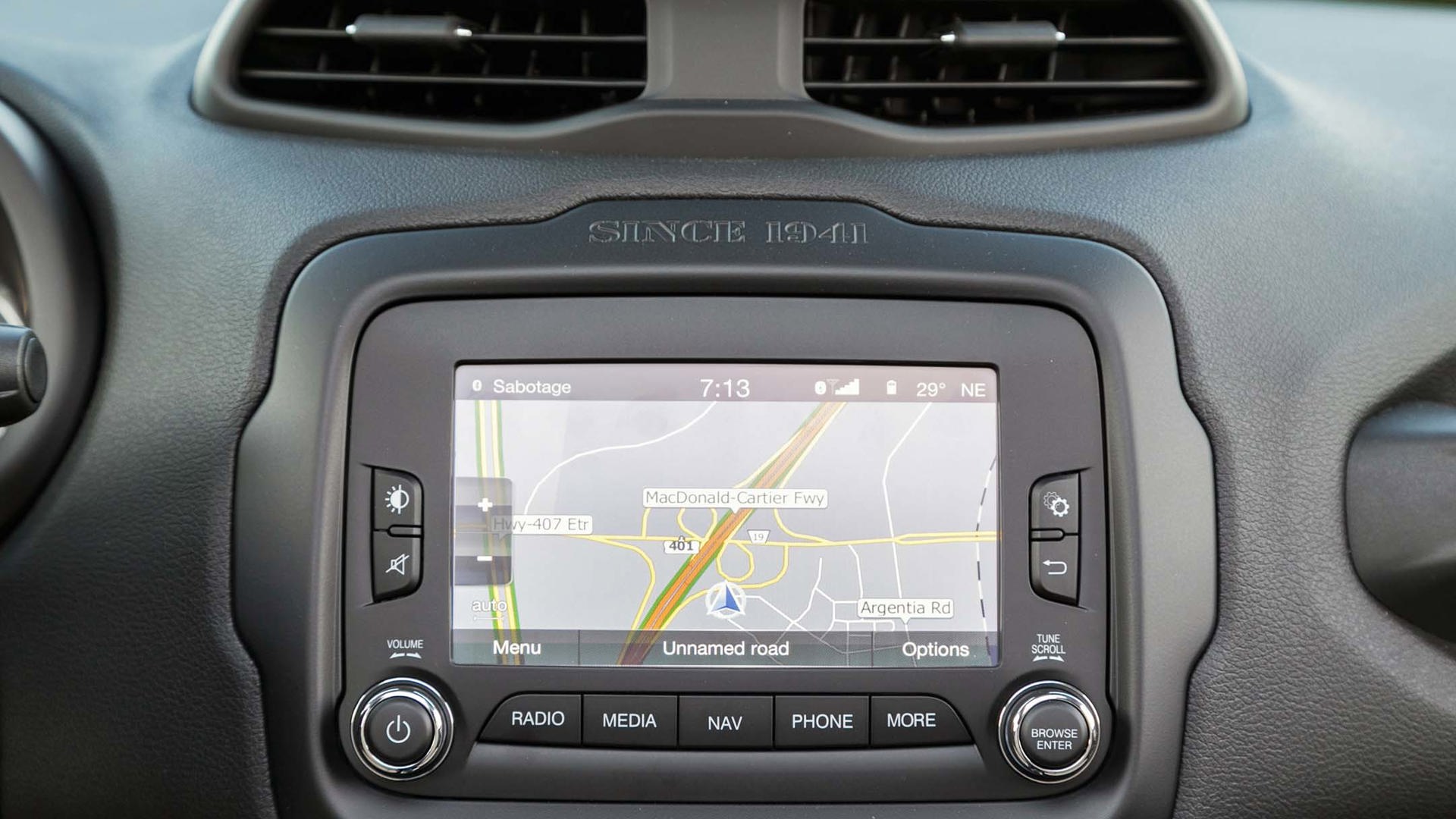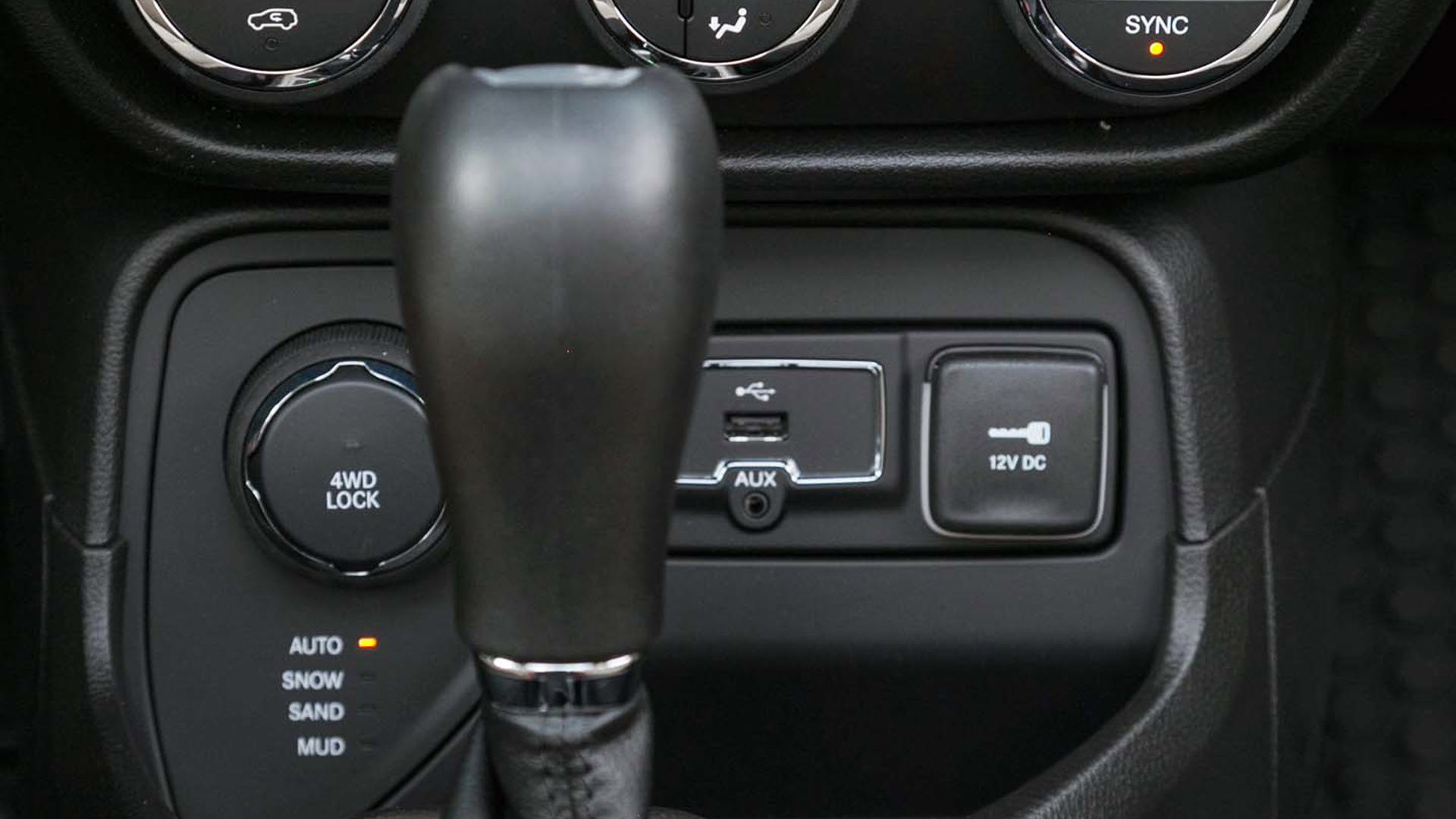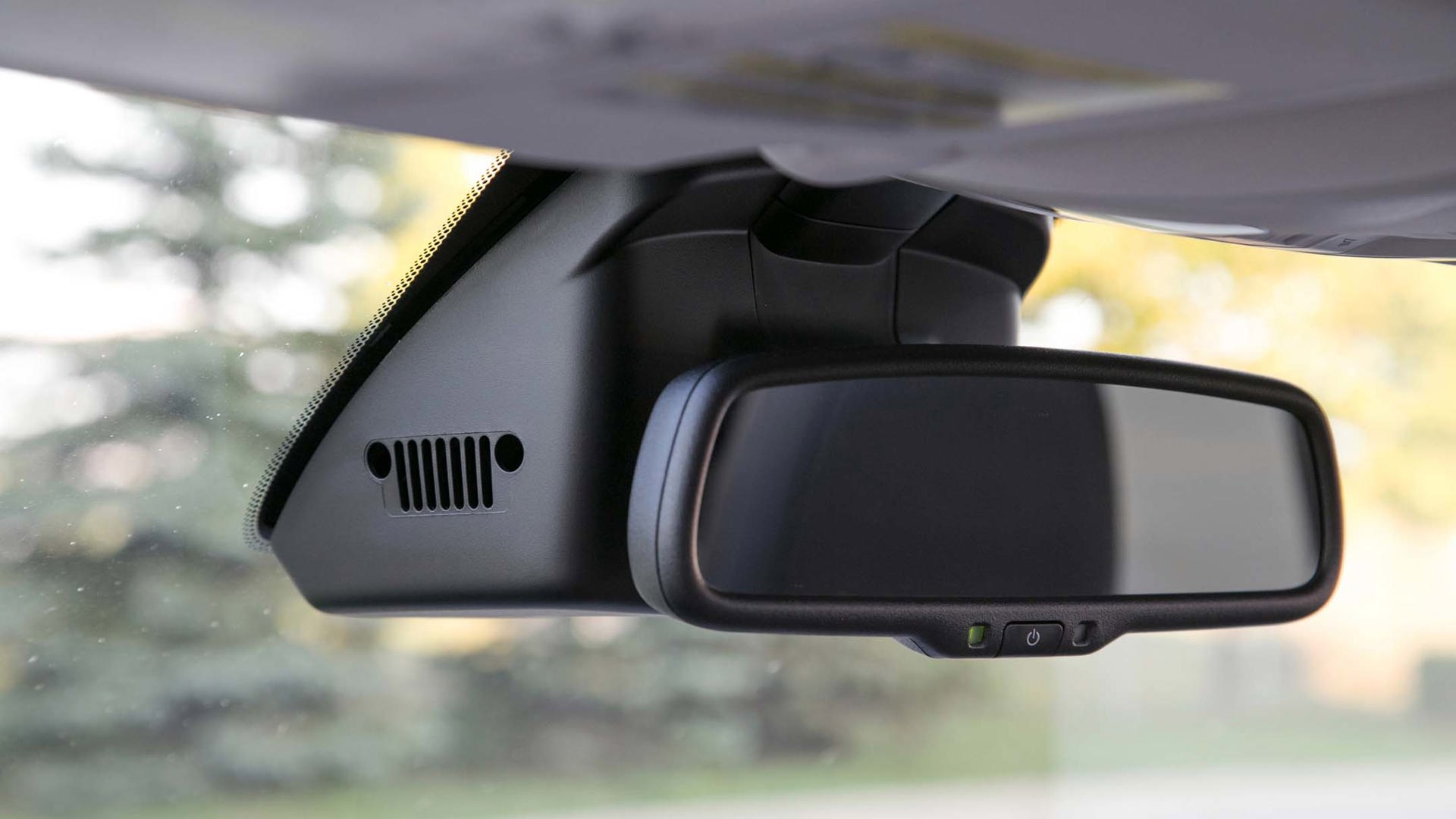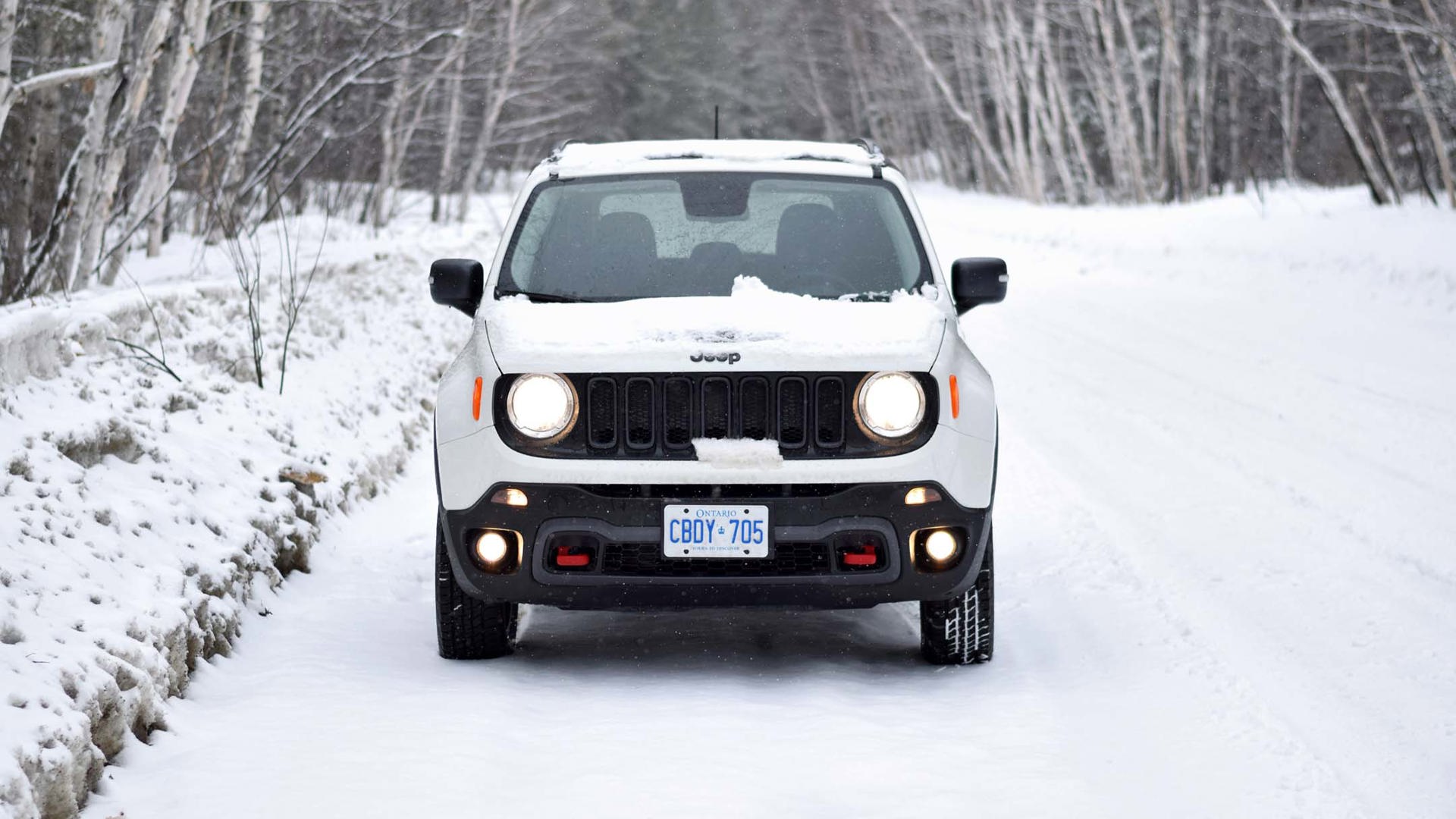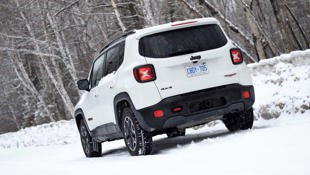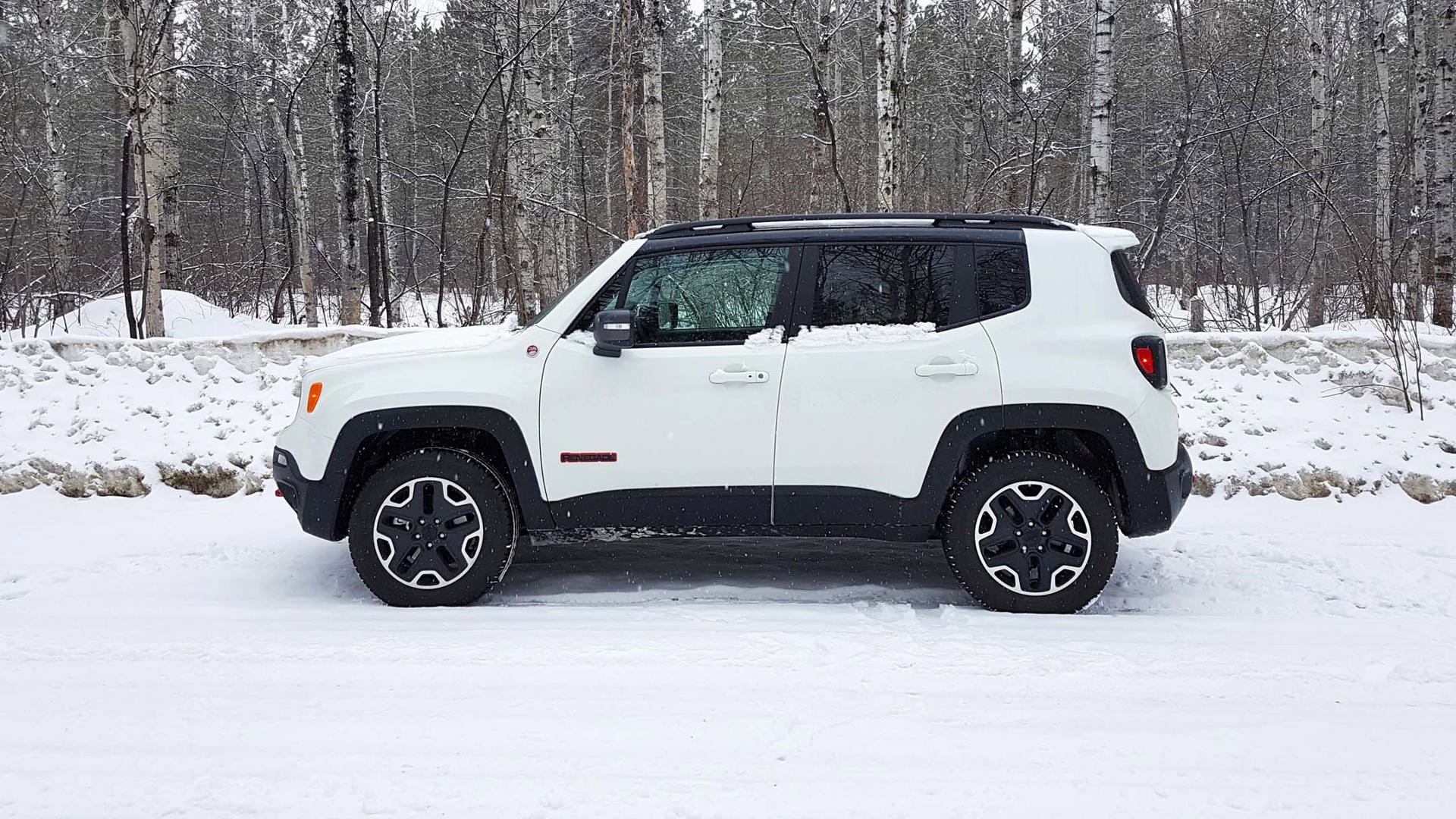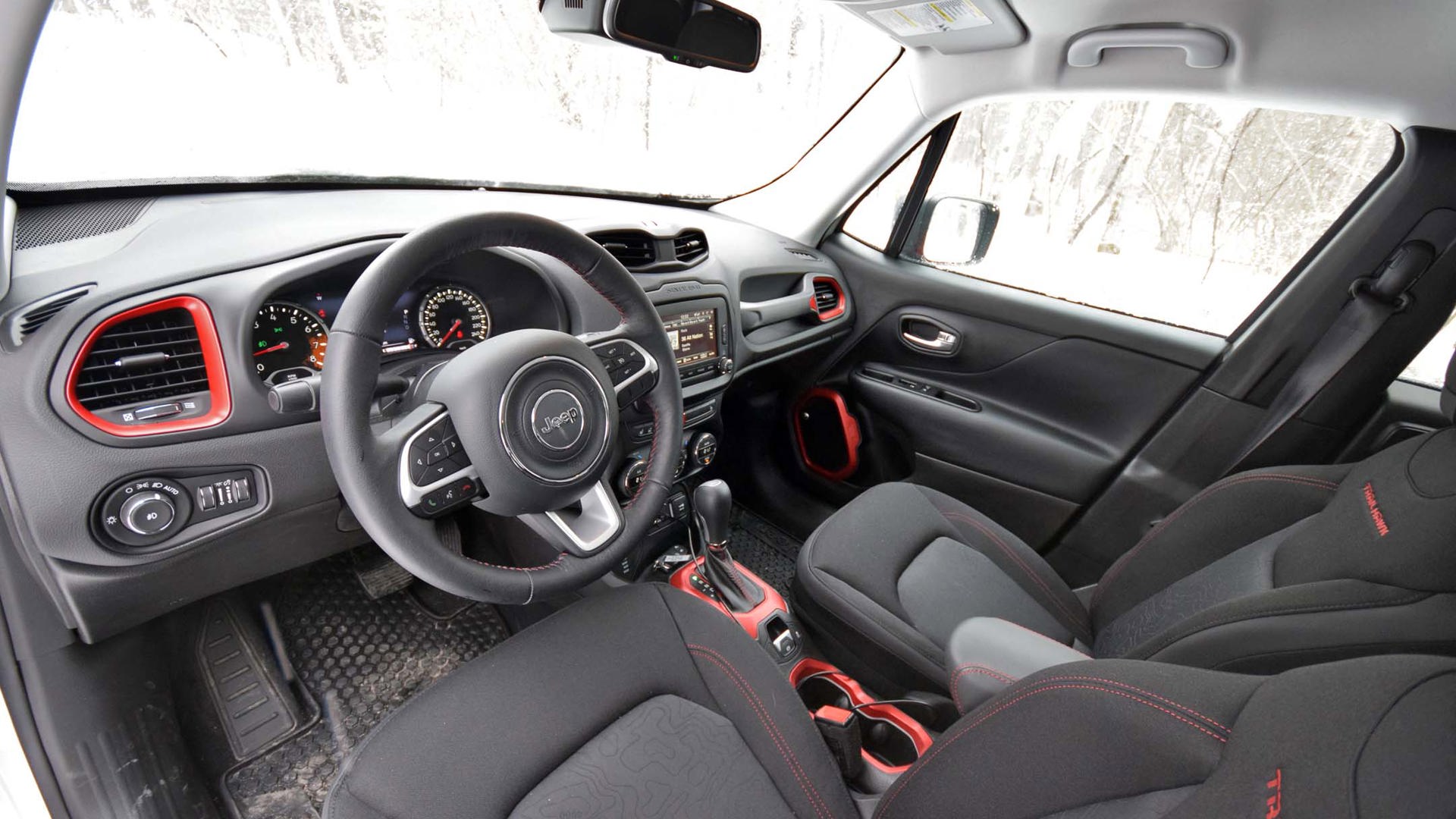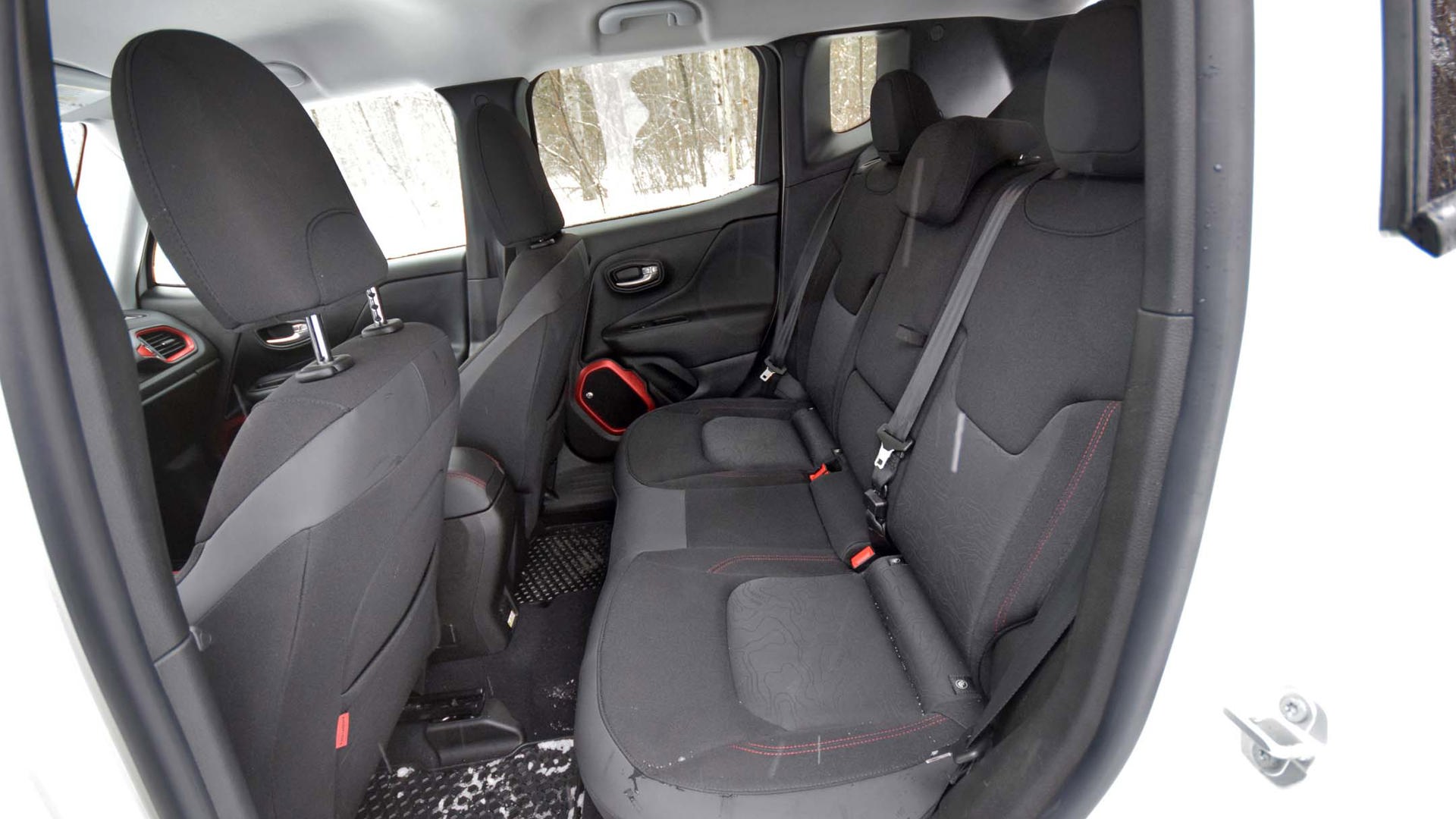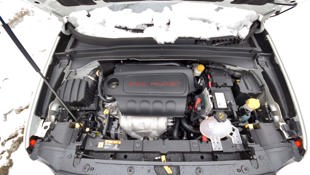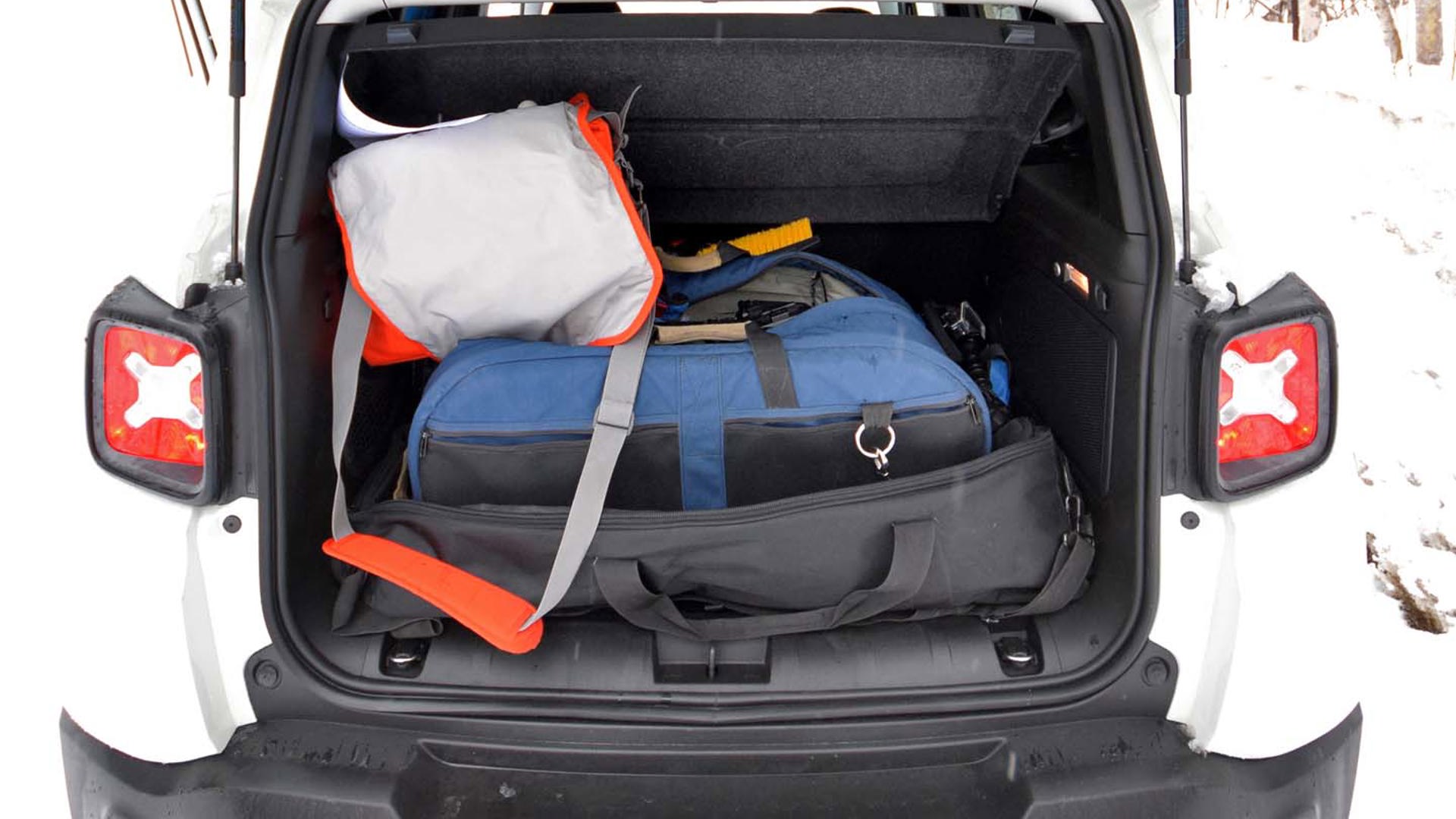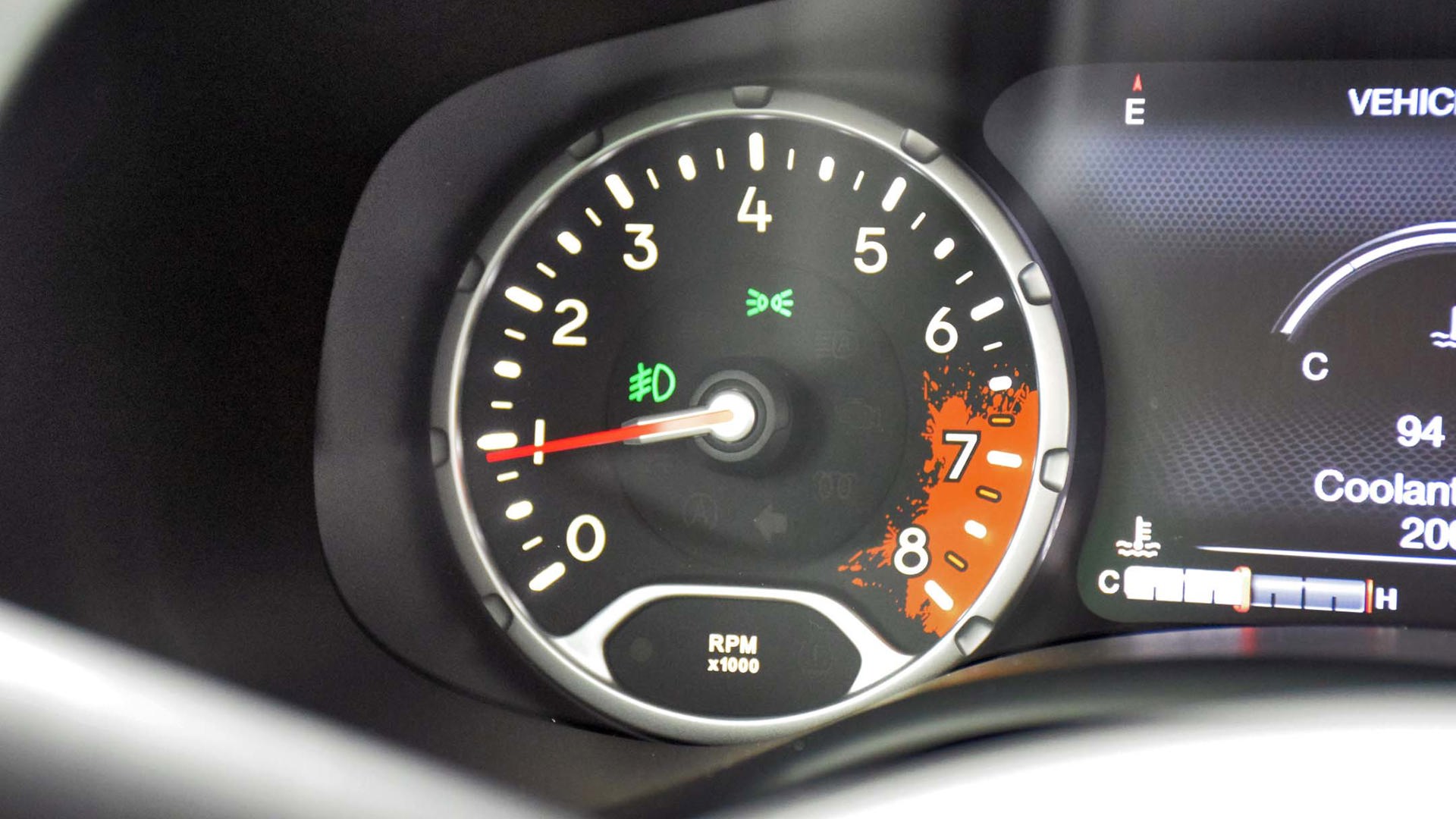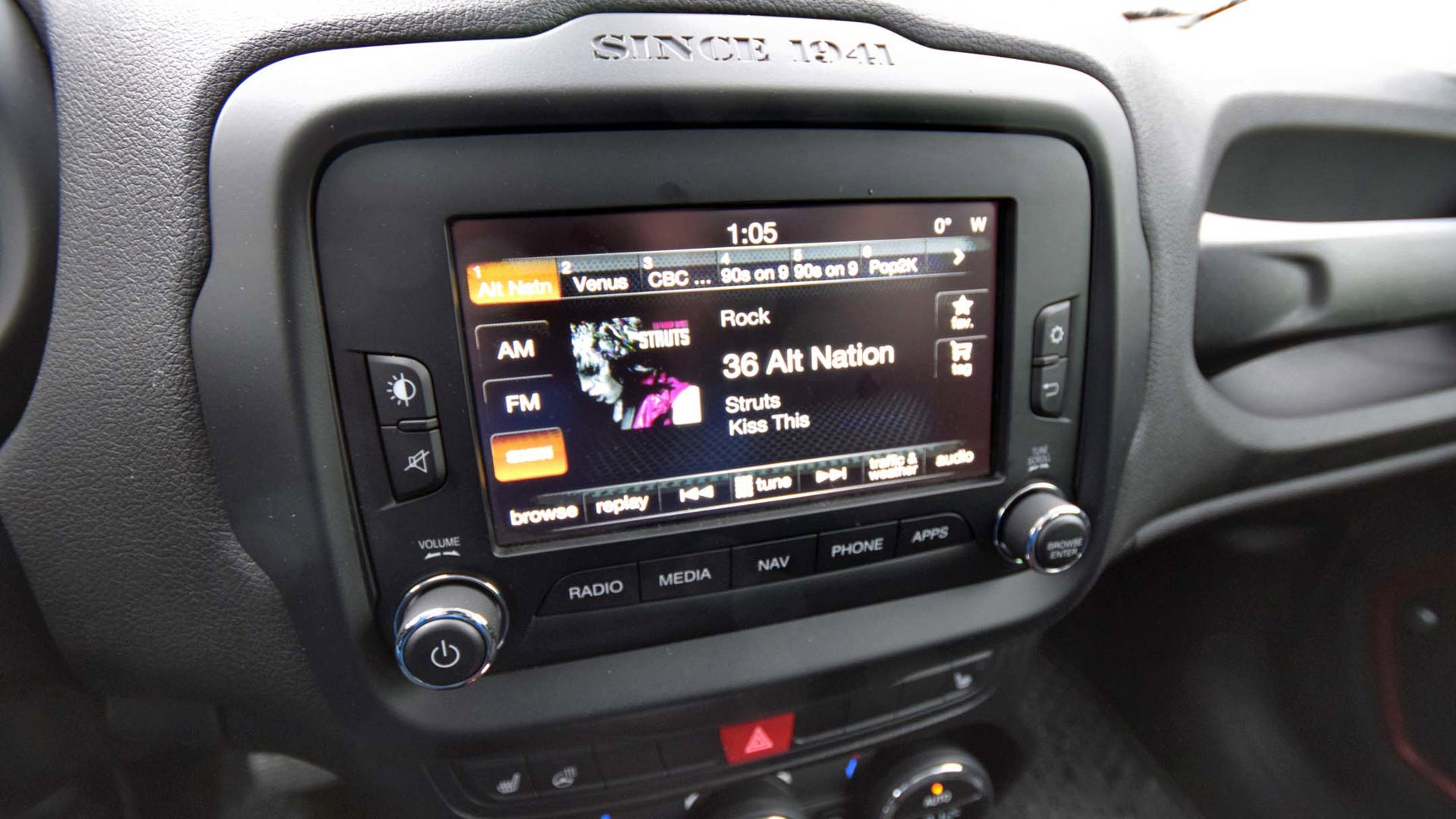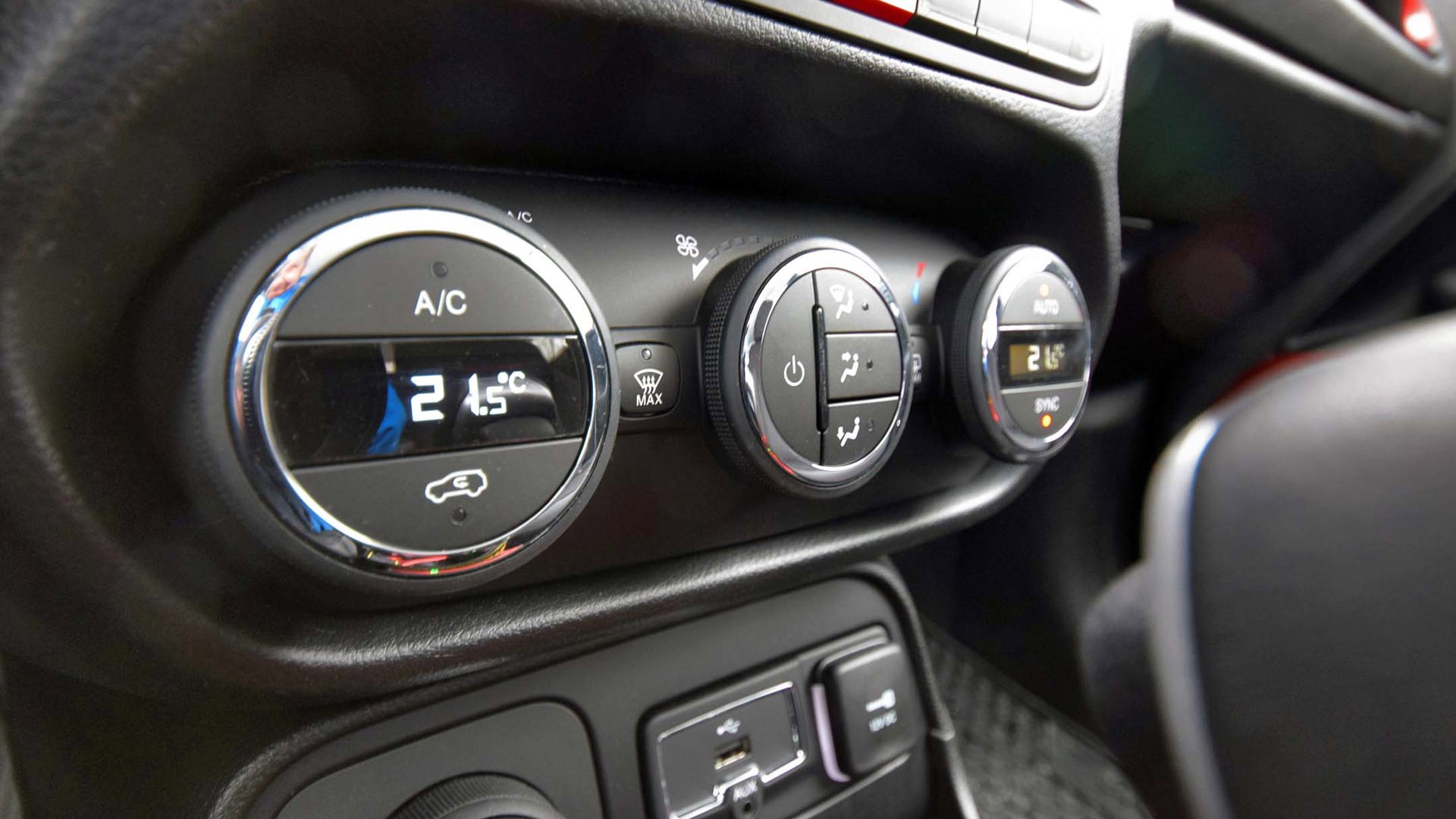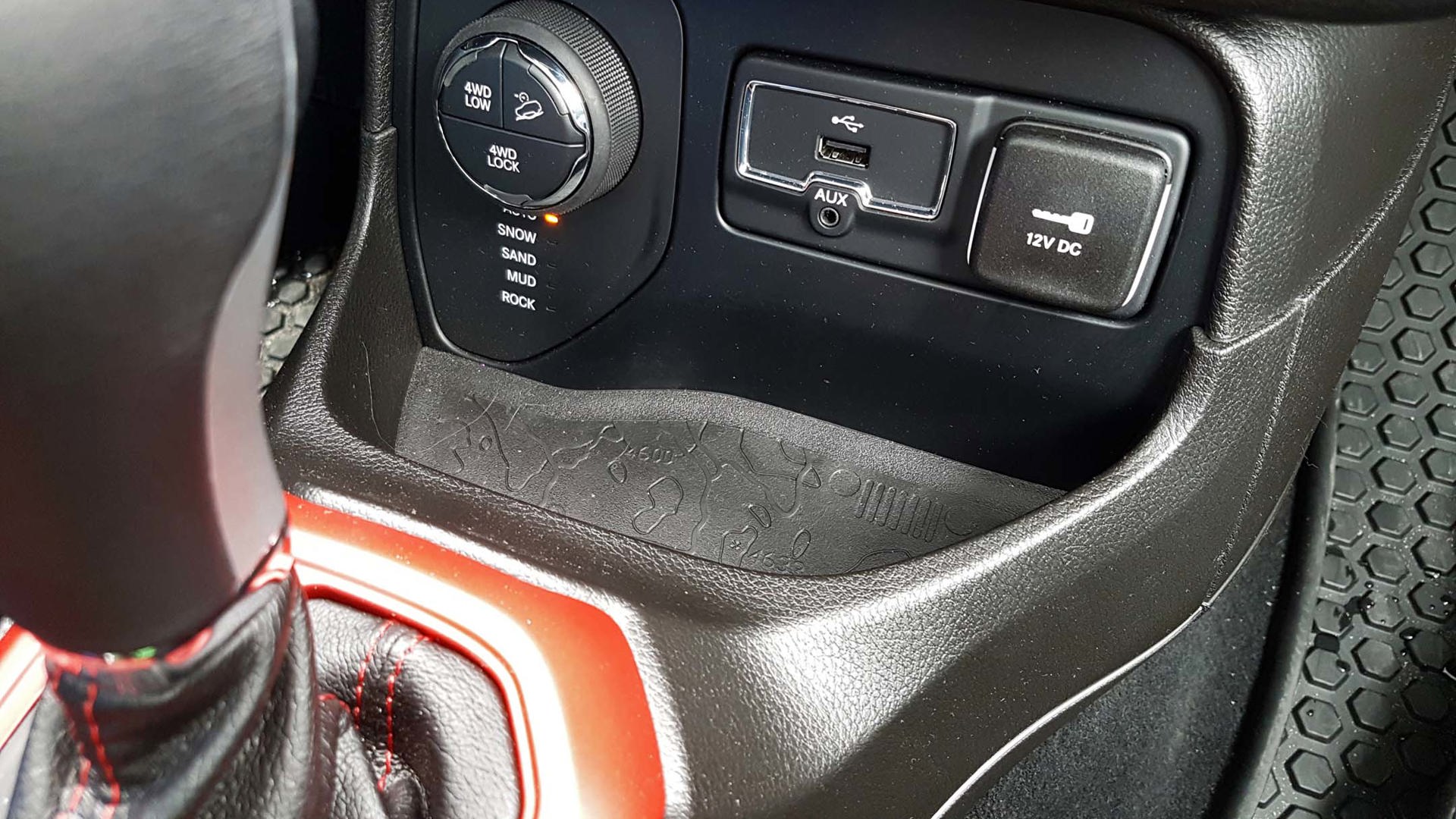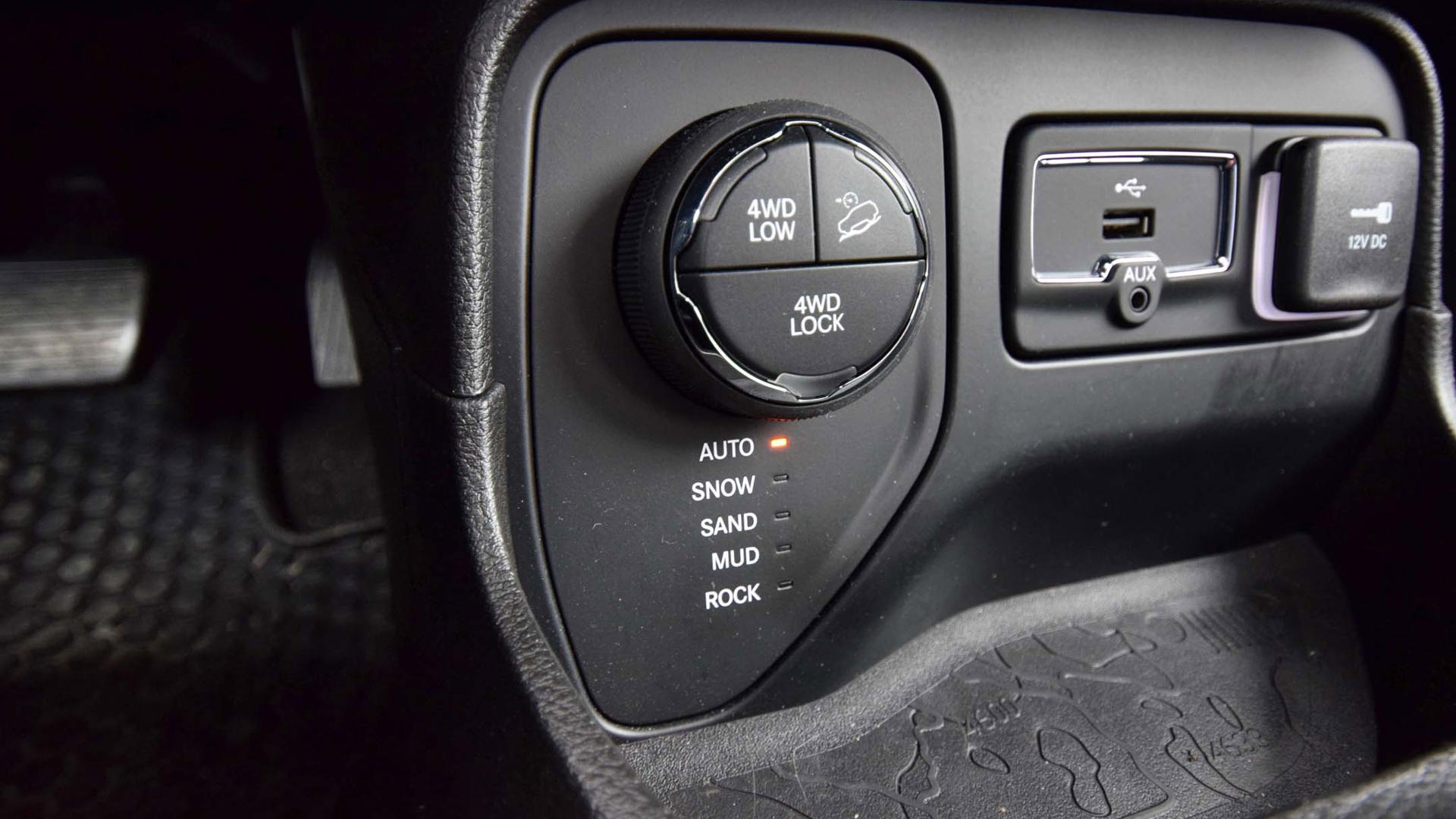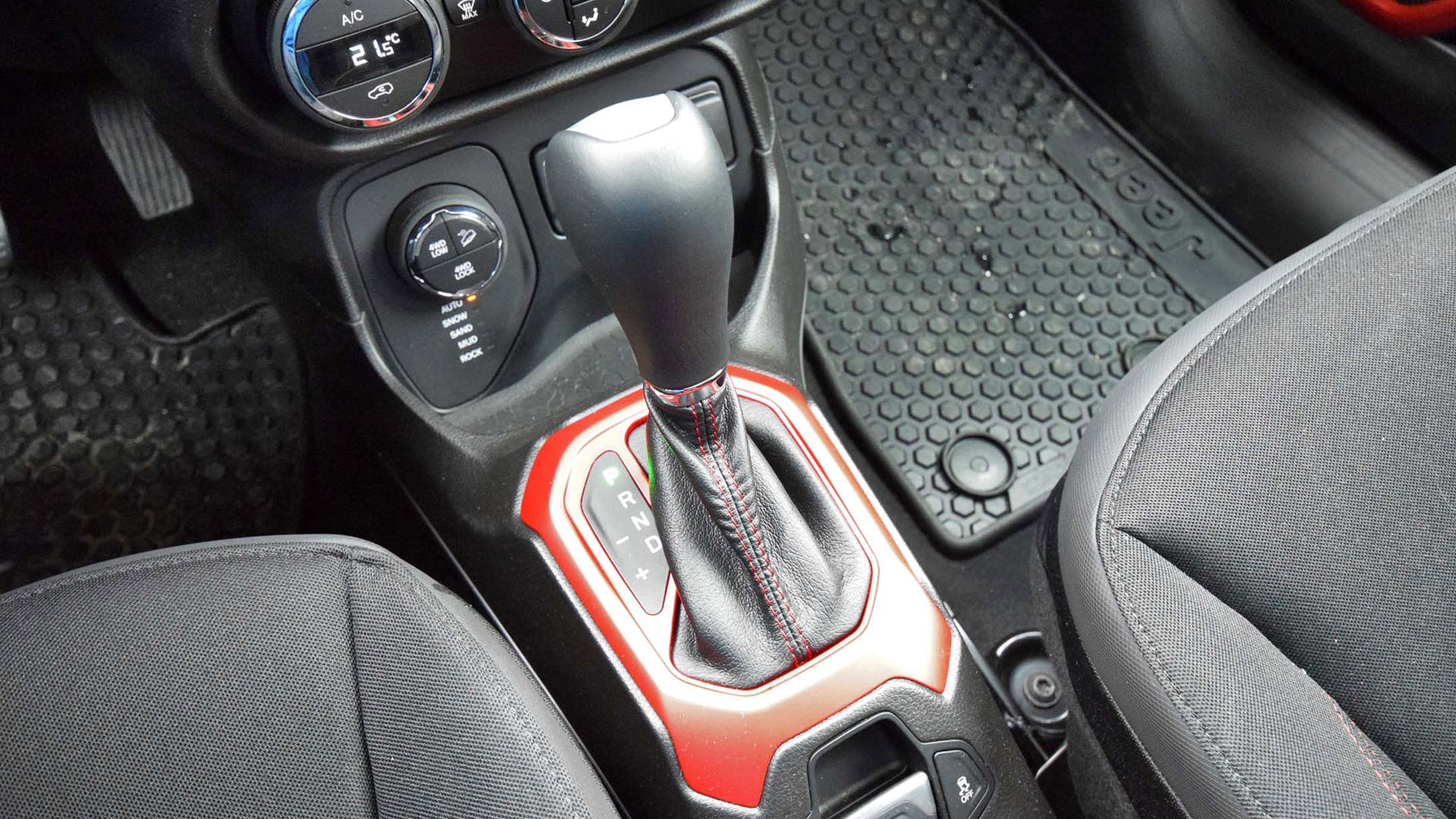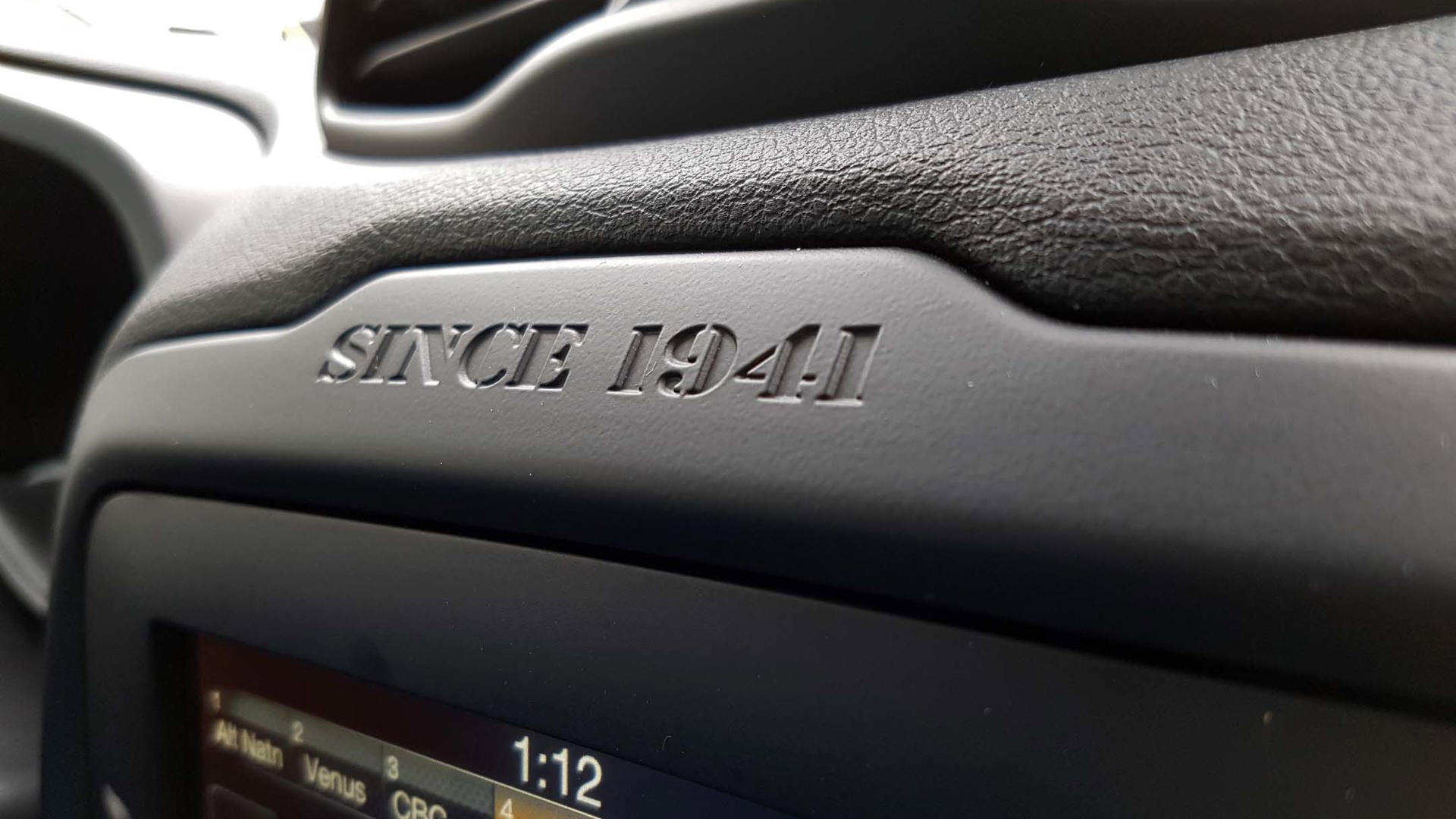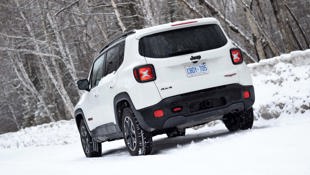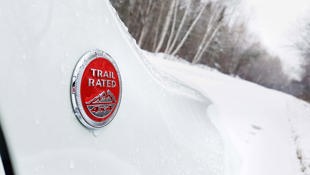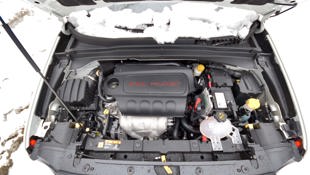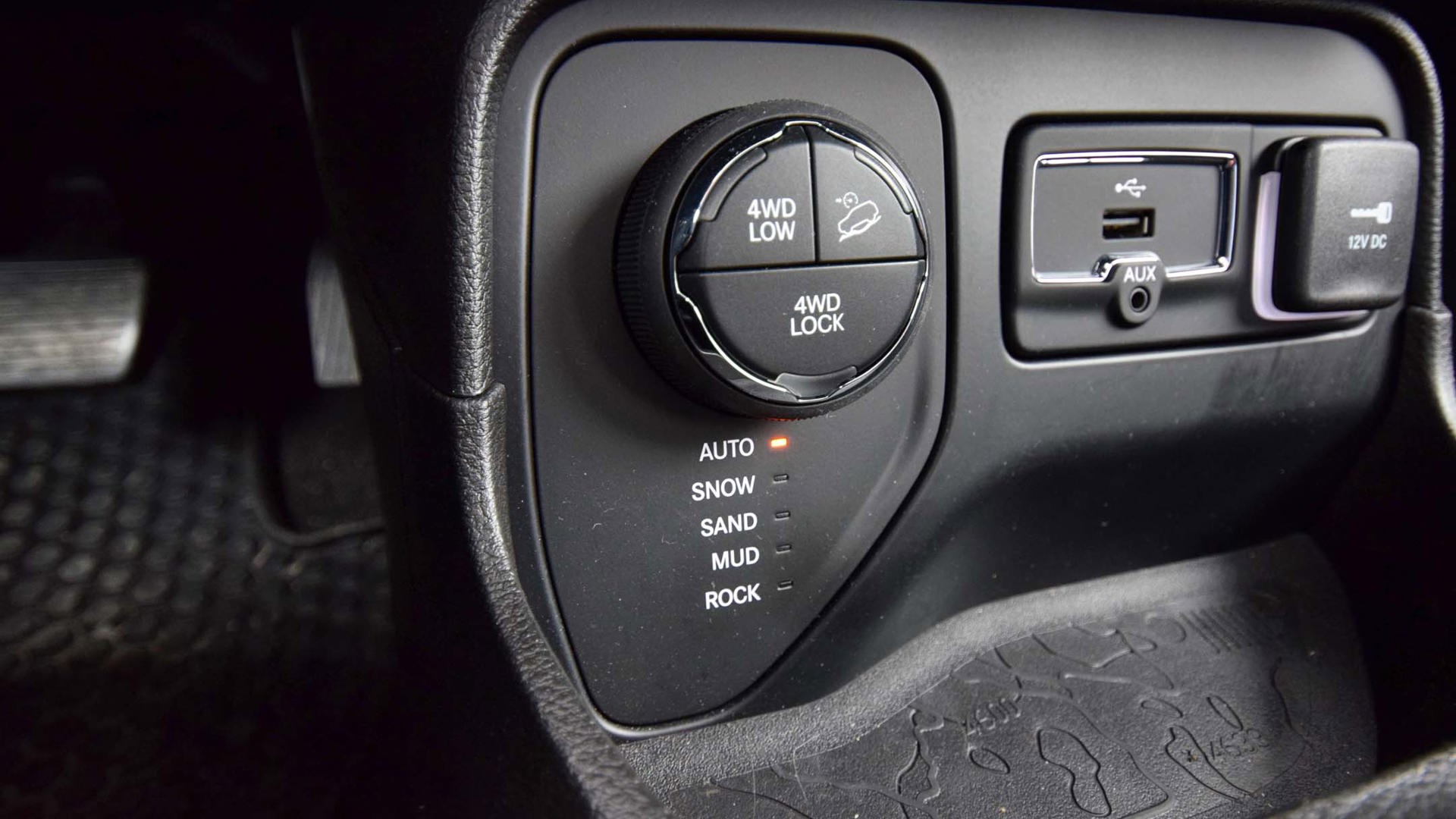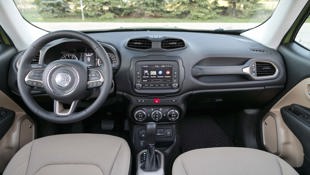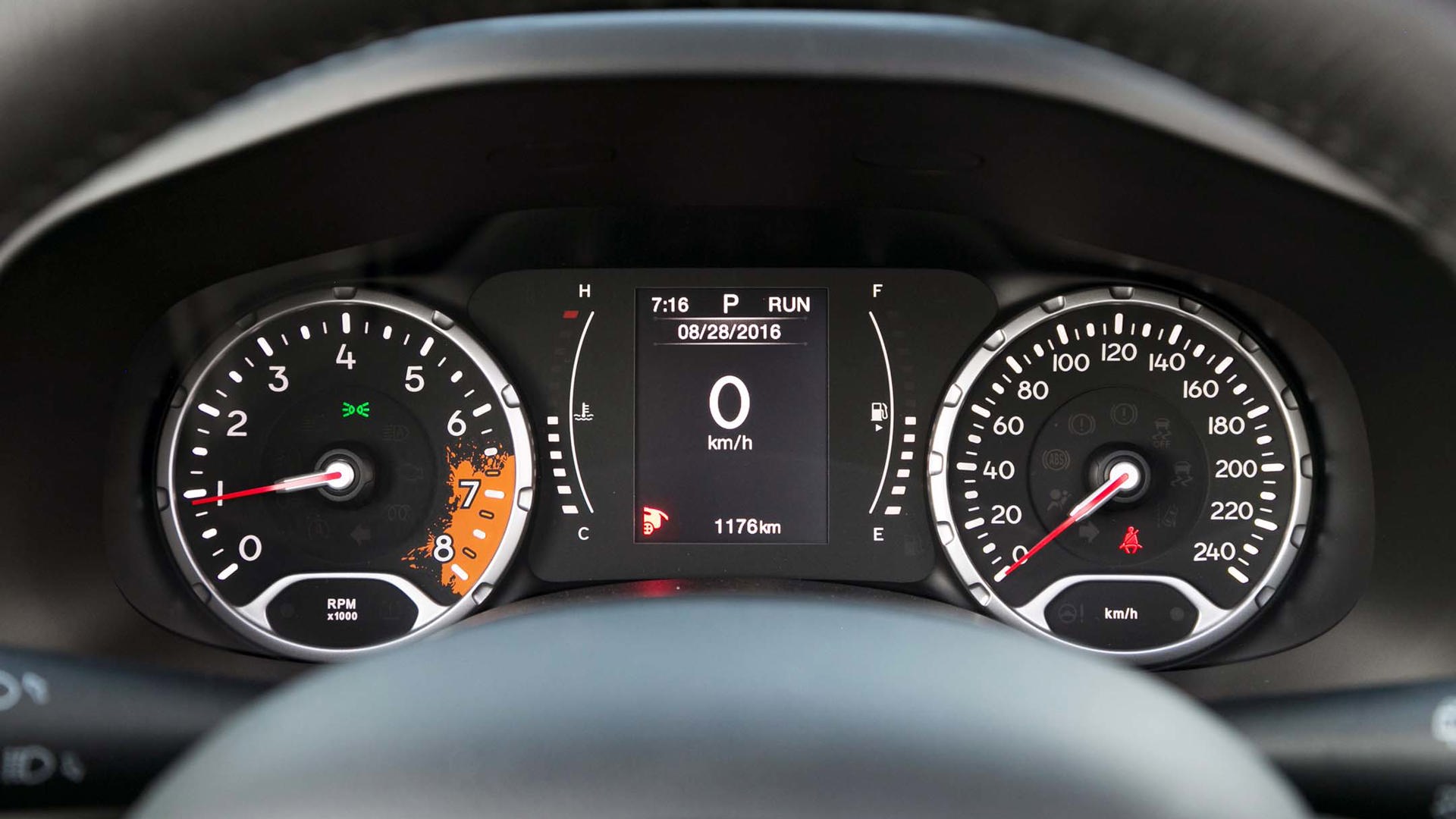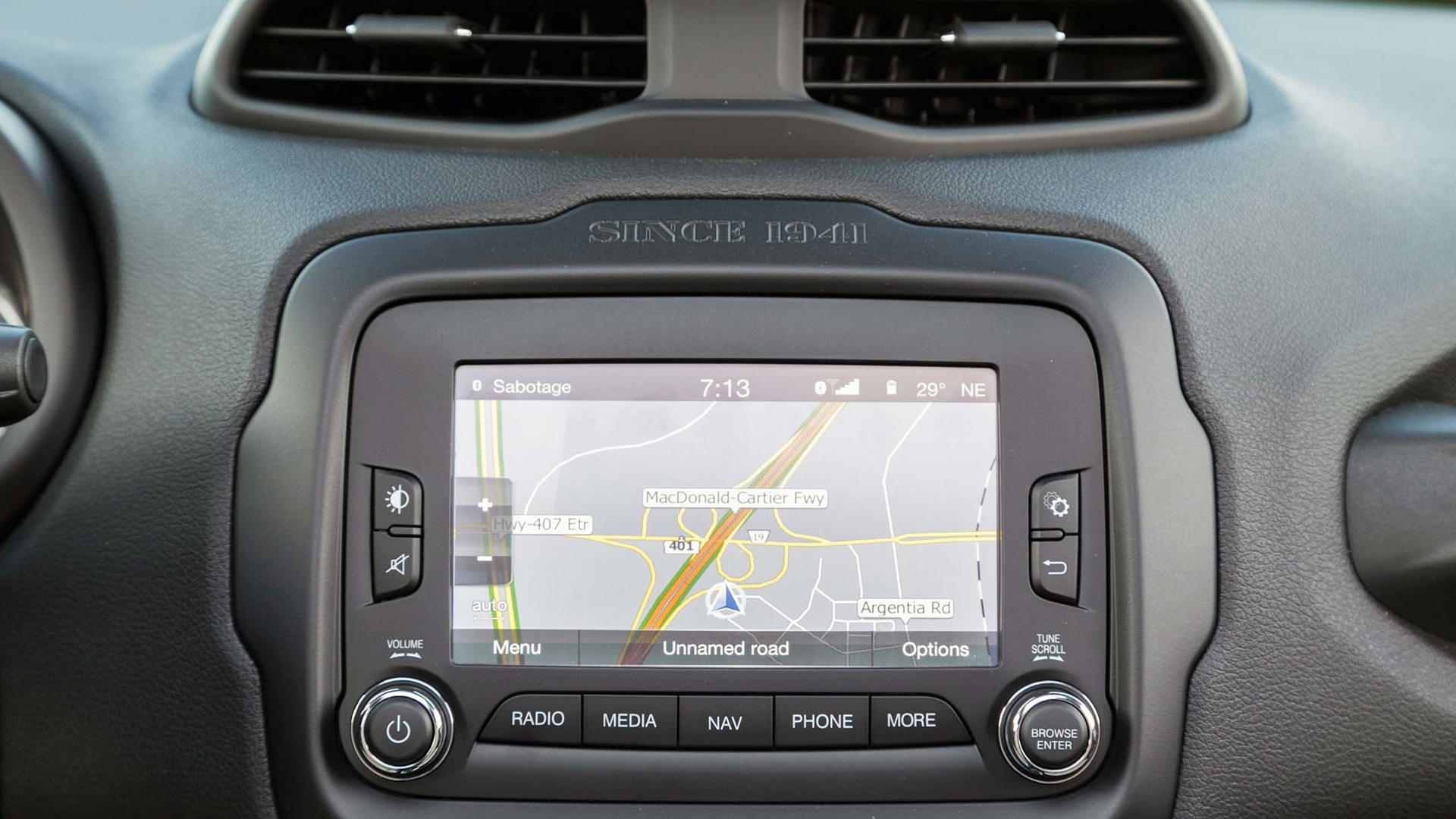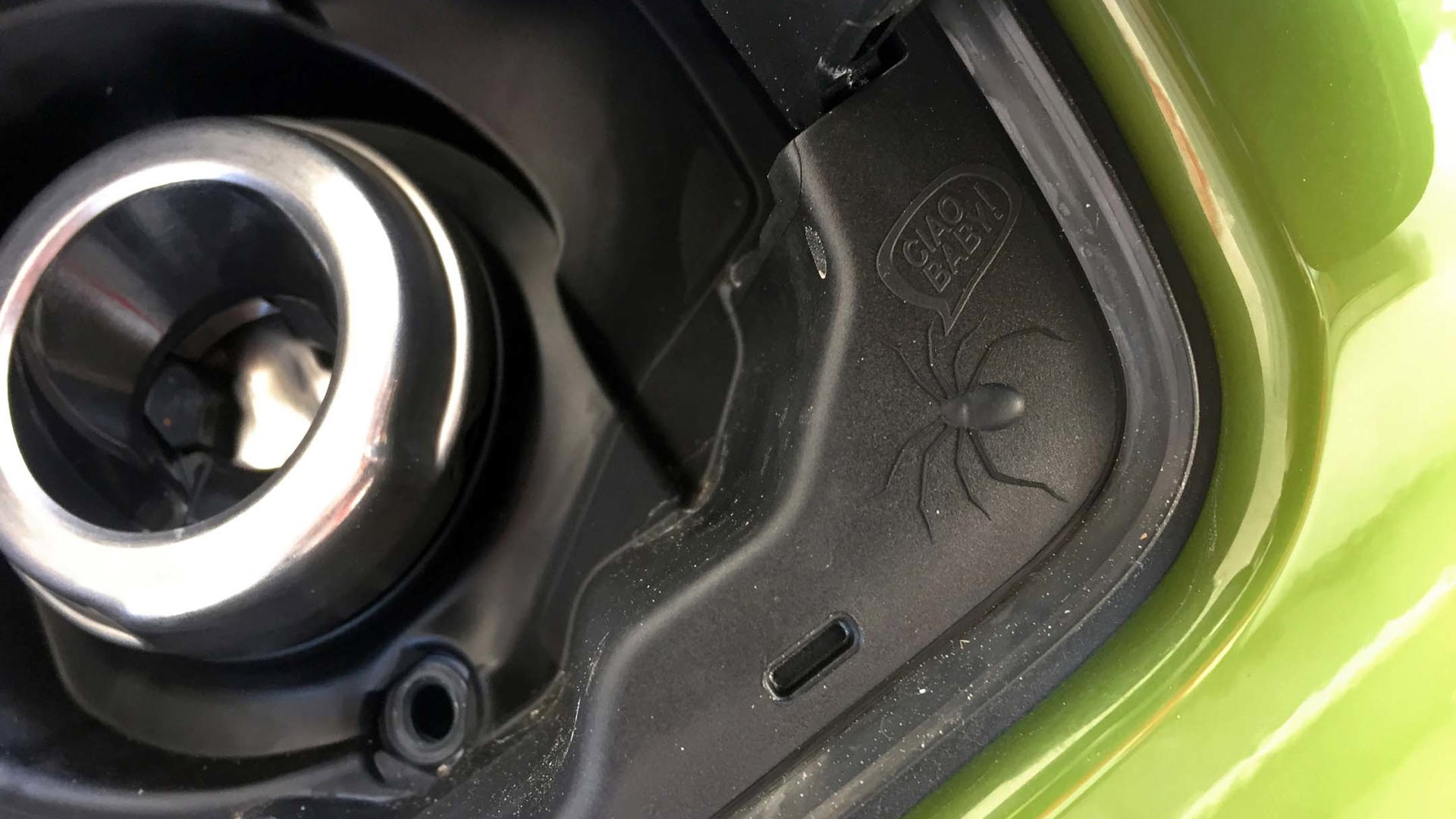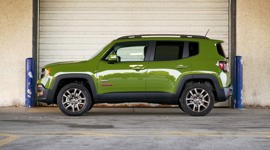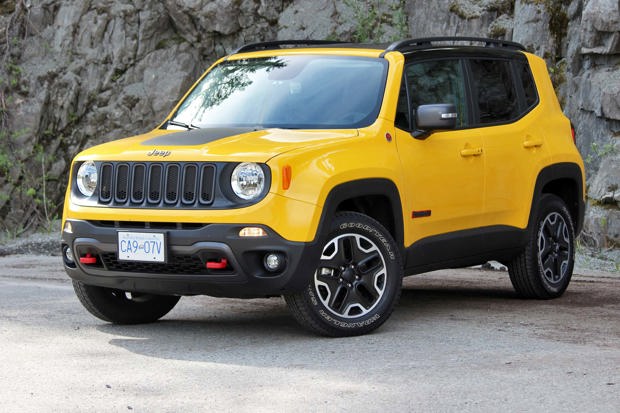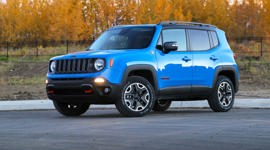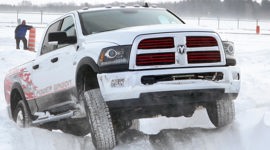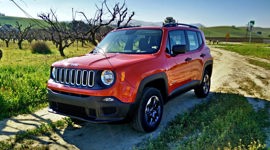Vehicle Type
Compact crossover
History/Description
The Jeep Renegade first appeared for model year 2015, as the first model built on FCA’s “small-wide 4x4” architecture, intended to provide best-in-class off-road capability and solid on-road driveability. Geared towards the compact crossover shopper after above-average levels of off-road capability, Renegade offered up to 8.1 inches of wheel articulation and 8.7 inches of ground clearance.
A “TrailHawk” designation was applied to Renegade models with added equipment and design elements to support activities on the road less travelled. This model featured an exclusive Rock mode in the Selec-Terrain system, increased ride height, skid plates, signature red recovery hooks, special front and rear fasciae – enabling improved off-road approach, breakover, and departure angles – and improved water-fording and wheel-articulation capability.
For use on the road more travelled, engineers took steps to ensure Renegade turned in a relatively quiet, upscale, and comfortable ride. Feature content included premium audio systems, heated steering wheel, automatic lights, remote engine start, automatic climate control, navigation, and more. Renegade also has one of the most easy-to-use and straightforward infotainment systems in the segment.
Engines
All units were powered by a four-cylinder engine. Choices included a 2.4-litre four-cylinder with about 180 horsepower, and a 1.4-litre turbocharged four-cylinder with 160 horsepower but slightly more torque than the larger 2.4-litre non-turbo engine.
Transmission choices included a six-speed manual or a nine-speed automatic, depending on the model in question.
A driver-selectable 4x4 system allowed the user to engage 4x2, 4x4, and fully automatic operation, which automatically engaged four-wheel traction when needed. Some models got the Jeep Active Drive Low system (standard on Trailhawk models), which added low-range gearing for challenging situations.
What Owners Like
Most owners love the Renegade’s pleasing highway drive, excellent off-road capability and small-car levels of manoeuvrability. Other owners are highly satisfied with the Renegade’s unique looks, and uniquely styled cabin.
What Owners Dislike
Common complaints include a rougher-than-expected ride on rough surfaces, and a vague or mushy feel to the steering and brakes at higher speeds. Test-driving shoppers are advised to confirm their acceptance of the Renegade’s performance on their own, noting that many owners wish for a few more horsepower at times.
Pro Tip: Trailhawk Means Off-road
Do you need the Renegade Trailhawk? Keep in mind that this off-road-oriented model is the most capable in its class – but the added capability may come with some compromises to handling, fuel efficiency, and ride comfort. That’s thanks to the Trailhawk-specific tires, suspension, and added off-road driveline hardware.
For the average shopper spending most of their time on paved roads or light-to-moderate off-road trails, a more conventional Renegade model may be the better choice.
Pro Tip: Professional Inspection Worth the Cost
The single best way to avoid buying a Renegade that may be concealing pricey issues or potential problems is to have that vehicle inspected by an FCA-trained technician before you agree to purchase. During a Pre-Purchase Inspection (PPI), a trained technician will carefully assess the vehicle for mechanical, electronic, and other problems.
Note, further, that not all Renegade units of a given year and mileage will be equally reliable, since reliability hinges, in no small part, on how the vehicle was cared for and maintained by past owners. For maximum peace of mind, opt for a used Renegade with full service records, and only once it passes a PPI with satisfactory results.
The Test Drive
Renegade Rumble
Spend a few moments of your test drive on a flat road with the climate control fan off, stereo off, and windows rolled up. Hold the Renegade’s speed around 45 km/h, while listening and “feeling” closely for a rumbling sensation – which affected owners describe as being similar to “driving over mild rumble strips.” If not present at 45 km/h, increase the speed slightly and try again. Continue this test up to about 65 km/h.
If you detect a grinding or vibration sensation, or what owners have dubbed the “Renegade Rumble”, moving to another unit is advisable. Though this issue doesn’t seem to affect most, or even many, Renegade models, this 54-page discussion thread indicates that plenty of owners have experienced it.
There’s some question as to the cause or causes of the rumble, though one owner had a dealer solve the problem by replacing much of the driveline hardware in his Renegade under warranty – including the transfer case, prop-shaft, and transmission.
As the cause and solution of this potential issue is unclear, buying a used Renegade that exhibits it is not advised. If in doubt, have a technician check it out. Note, further, that this issue does not seem to affect models with the manual transmission.
Radiator Fans
The Renegade’s cooling system includes electrically driven cooling fans, designed to move air across the radiator to assist with engine cooling in certain situations. The fan is computer-controlled, and engages at the direction of the engine computer on an as-needed basis.
Some owners have reported problems with their electric cooling fans, up to and including complete fan and motor failure. Many have not.
On your test drive, be aware that a rapid ticking, groaning, or whining sound from under the hood is a sign of problems with these cooling fans. In some cases, a loose fan component may cause a vibration or rattle. In most cases, the telltale sound is as expected: a rapidly spinning fan blade coming into contact with a fixed object.
Some owners report this as a precursor to the fan assembly becoming detached from the motor, which could cause engine overheating, damage to the radiator, or even a fire in extreme cases.
As an added check, where appropriate, apply full throttle for an extended period and then immediately pull over, stop the vehicle, and pop the hood. This tends to trip the electric cooling fan into action. With the hood open, it should be easy to watch and listen to the fan (carefully), for any signs of trouble as mentioned above.
Note that this issue seems most likely on 2015 and 2016 units.
Air Conditioner Problems
Based on information in this discussion, test drivers are advised to take extra steps to confirm that the air conditioner in their used Jeep Renegade candidate is in proper working order before agreeing to purchase. Where possible, test drive the Renegade at the hottest part of a hot day. With the vehicle stopped, engage the A/C, and confirm that cold air arrives within a few seconds, and that the flow of cold air remains consistent over the course of a few minutes. Continue to assess its performance during your test drive, with the vehicle in motion.
Some owners have reported air conditioner issues, including leaky refrigerant lines, a mysterious disappearance of said refrigerant even without a detectable leak, and improper refrigerant levels in the system from the factory.
Do not purchase or accept delivery of a used Renegade that’s experiencing air conditioner problems. Further, as the unit you buy approaches the end of its warranty period (if applicable), having the A/C system checked for proper refrigerant levels and overall health is advisable.
Oil Consumption
Check the oil level and condition of the used Renegade you’re considering, as per the instructions in its owner’s manual, before starting your test drive. Plan to monitor oil levels regularly, on a weekly basis, during ownership, too. This is in addition to regular oil changes.
Numerous owners have reported oil consumption issues, in which the engines used in the Renegade (and other models) may consume higher-than-expected levels of engine oil.
Owners need to monitor this religiously, but many do not. Low oil levels may cause the vehicle to stall, or to fail to start up. This is a failsafe built into the engine to prevent damage caused by low oil levels.
When regularly checking your engine oil, bring any concerns to the attention of your local service department, have your concerns documented, and keep a copy of the paperwork in case future warranty claims are required. In some cases, dealers may take steps to monitor the oil consumption, before deciding on a course of action to fix it.
Note that some owners have reported this issue, and many have not. Be on the lookout for trouble signs, and remember that regular and continual checks of engine oil level are important for the health of any vehicle.
MySky Roof Rattle
Some Renegade models are equipped with the MySky sunroof system, which numerous owners say may rattle and squeak in certain (or many) situations. In some cases, dealers have been able to remedy the annoying rattle, which seems most likely at the front edge of the vehicle’s roof, and may be temperature-dependant.
In other cases, owners have fixed the problem with the strategic placement of some small peel-and-stick foam pads to help quell the rattle – especially if slight upwards pressure on the installed roof panel stops the rattle.
Here’s some more reading on the problem, and some possible solutions.
Recalls
Here’s a list of recalls. You can check if any of them apply to the vehicle you’re considering by looking up its VIN on the Jeep/FCA website.
Verdict
Given the relatively small number of owner-posted complaints relative to total sales volume of the Jeep Renegade, overall reliability is tricky to assess, here. Even in forum-posted polls, the majority of owners report a satisfactory ownership experience with minimal need to visit the shop for unscheduled work.
For the risk-averse shopper, we’d advise buying the newest in-warranty Renegade you can find – skipping the potentially rattly sunroof and opting for the manual transmission, if feasible. Work with your local dealership to confirm that all available software updates have been applied, for further long-term confidence against unpleasant surprises.
Finally, for maximum peace of mind, consider a Pre-Purchase Inspection to be mandatory. In extreme cases, this approximately $200 inspection could keep you from buying a used vehicle that’s about to need thousands in repairs.
Crash Test Results
IIHS: results here
NHTSA: 4/5 Stars
